Discover the best insulated hunting boots for the UK in 2025, balancing comfort and durability. Find your perfect pair for the season ahead. Read more!
Why You Need the Right Insulated Hunting Boots in the UK?
If you’ve ever trudged across a frosty stubble field in the pre-dawn dark or stalked woodland deer through ankle-deep mud in January, you’ll know this: your boots make or break the day.
Here in the UK, we may not get the polar extremes of the Rockies or the snowpack of Scandinavia, but that doesn’t mean winter hunting is easy on the feet. Quite the opposite. Our cold is a damp, creeping cold—the kind that seeps in slowly and settles in your socks if your gear isn't up to the job. Add unpredictable rain, thick ground frost, and slippery ground covered in wet leaves, and it’s clear that a decent pair of boots isn’t a luxury—it’s survival.
As a lifelong stalker and shooter born and bred in Northumberland, I’ve learned (sometimes the hard way) that insulation performance, waterproofing, and fit are non-negotiables in winter boots. And with more brands than ever promising the “best winter boots”, it’s easy to get caught up in marketing fluff. That’s why I’ve written this guide: to cut through the noise and help you find the best-insulated hunting boots for UK 2025—based on real terrain, real weather, and real hunts.
Whether you're out lamping foxes, walking hedgerows for pheasant, or managing deer in icy silence, this guide will help you keep your feet warm, dry, and ready to move. Because once your toes go numb, your focus—and your shot—start to suffer.
Best Insulated Hunting Boots for UK 2025 – Quick Overview
When it comes to winter hunting in the UK, the demands are specific—and they’re different from what you’ll find across the pond. Our winters may not bring blizzards every week, but the mix of rain, frost, sleet, and deep mud can be just as challenging. That’s why the boots I recommend here aren’t chosen based on marketing hype or fancy names—they’re picked based on how they perform in real British conditions.
In this guide, we’ll look at three standout products that I’ve field-tested personally across Scottish moors, English farmlands, and Welsh woods. First, the Hillman AEROGEL 2.0, is a serious cold-weather performer with NASA-grade insulation and weather-sealed construction. Then there’s the Hillman DRYHUNT 2.0, which I rate as one of the most versatile waterproof boots for muddy trails, pigeon shooting, and winter walking days. And finally, the Ultrawarm Merino Hunting Socks—an underrated piece of kit that can transform an ordinary boot into something you’ll want to live in.
Each of these boots (and the socks too) brings something unique to the table—be it full grain leather uppers, bungee lacing systems, or fleece-lined interiors. Over the next sections, I’ll break down their key advantages, how they compare to more familiar UK names like Seeland, Jack Pyke, Merrell Thermo Chill, Muck Boots, and Hillman, and help you choose the pair that suits your terrain, hunting style, and cold-weather tolerance.
Because in 2025, with winter getting wetter, muddier, and more unpredictable, choosing the best-insulated hunting boots for the UK isn’t just about keeping your feet warm—it’s about keeping you in the game.
What Makes the Best Insulated Hunting Boots for UK 2025?
It’s easy to assume that any pair of insulated boots will do the job—but here in the UK, weather conditions and terrain types demand more thought than that. The best-insulated hunting boots for our kind of winter don’t just offer warmth—they balance it with mobility, waterproof protection, and grip because it’s rare that you’ll be hunting in dry snow on firm ground.
Unlike countries with prolonged sub-zero temperatures, the UK has milder winters marked by damp cold, unexpected downpours, and heavy, wet ground. That means overly bulky boots—designed for Canadian snowfields or Alaskan hunts—can be a liability. You need boots that give decent warmth, yes, but also let you move freely through tough terrain, handle slippery slopes, and wick away sweat during uphill stalks.
Equally important is keeping your feet dry. Our cold may not be as dramatic, but it’s far more invasive. Once your feet are wet, it’s only a matter of time before the cold creeps in—so waterproof uppers, sealed seams, and breathable linings are critical. And when you throw in long days in the field, you'll also need good ankle support, flexible soles, and as little break-in period as possible.
In the next section, we’ll break down the exact boot features that make a difference when you're out walking a pheasant drive, stalking fallow in frosty woodland, or just doing winter chores on the farm. Because in the UK, the line between "field boots" and "everyday outdoor footwear" is often blurred—and your boots need to keep up.
Boot Features That Truly Matter in the UK Outdoors
Not all boots are built for our kind of winter. The best insulated hunting boots for the UK aren’t just warm—they’re practical, waterproof, and adapted to our soggy fields, dense woodlands, and fast-changing skies. Here are the key features you should always look for when choosing your next pair of winter boots.
Waterproof Protection That Works in British Weather
A good waterproof boot is non-negotiable. Here in the UK, you’re far more likely to face driving rain, boggy ground, and wet grassland than knee-deep snow. That’s why the Dryhunt® 2.0 waterproof membrane used in Hillman boots is a game-changer—it blocks out moisture from puddles, frost, and mud while letting sweat escape. No more cold feet halfway through your day.
Insulation That Balances Warmth and Breathability
In the British climate, insulation needs to be smart—not excessive. Go too heavy, and you’ll sweat; too light, and you’ll freeze. Look for synthetic insulation or cutting-edge materials like aerogel, used in Hillman’s AEROGEL 2.0, which delivers extremely warm boots without adding bulk. Pair it with Ultrawarm Merino Socks for natural temperature regulation that keeps your feet warm even when conditions change.
Full Grain Nubuck Leather or Waterproof Uppers?
Boot construction matters. Full grain leather is tough, weather-resistant, and moulds to your feet over time. Nubuck leather, offers that same durability with a softer finish and improved flexibility, ideal for moving across tough terrain without the stiffness of old-school boots. Add a protective layer of wax, and you’ve got year-round protection. Hillman uses full-grain Italian cow leather, Dyneema® for its extra durable outer shell.
Bungee Lacing System and Proper Fit
The last thing you want is a loose, slouchy fit when you’re walking a beat or creeping through woodland. A bungee lacing system offers a snug, secure adjustment without the hassle—especially useful when wearing thick socks or gloves. Combined with a well-shaped heel and mid-foot structure, it ensures your comfortable boot stays locked in and blister-free.
Fast Break-In Period for Everyday Wear
No one wants to spend weeks breaking in new boots before they’re hunt-ready. Hillman’s DRYHUNT 2.0 and AEROGEL 2.0 offer minimal break-in periods, making them ideal for hunters who expect their boots to perform from the first step. Whether you're stalking red deer or heading out for winter hiking, a flexible upper and ergonomic sole design makes the difference.
Outsole and Traction: Vibram or Bust
A proper winter boot needs a Vibram sole or equivalent to handle slippery ground, icy tracks, and muddy slopes. Traction is what gives you confidence on the move, especially when walking with gear or crossing stiles. Hillman’s custom outsoles provide serious grip without being too stiff or noisy—perfect for when stealth is just as important as stability.
Cold Weather Compatibility and Fleece Lining
Lastly, when the mercury drops, a good fleece lining makes all the difference. It traps warm air, reduces heat loss, and feels soft against the skin. Pair that with thick soles, insulation close to the footbed, and waterproof leather, and you’ve got a setup that stands strong in cold weather without the bulk of heavy snow boots.
Let’s take a closer look at the boots that deliver all of this—and more. Starting with the standout of the season: Hillman AEROGEL 2.0.
Top-Rated Hillman Boots for the British Winter
After decades of hunting in everything from sleet to sideways rain, I’ve worn boots that have failed me in every possible way. And I’ve also worn boots that surprised me—in comfort, warmth, and durability. Hillman’s winter lineup belongs in the latter camp, and in my opinion, they deserve more attention here in the UK.
These aren’t boots built for Instagram. They’re built for British winter terrain: fields of deep snow flooded forest tracks, and long walks in the dark with numb fingers and wet gear. If you want extremely warm boots with proper boot features, here’s where to start.
AEROGEL 2.0 Insulated Waterproof Hunting Boots
If you’re sitting in a hide for hours or stalking through wind-swept fells, you need serious warmth—and these boots deliver. The AEROGEL 2.0 uses a NASA-developed insulation material that traps heat without the weight. You get exceptional insulation performance with no overheating, no sweating, and zero cold spots.
Why it works in the UK:
-
Built for extreme cold without being overbuilt
-
Waterproof uppers keep your feet dry, even in heavy wet grass
-
Inner fleece lining adds softness and comfort
-
The grain leather upper is durable, weatherproof, and flexible
-
Surprisingly short break in period for a stiff-looking boot
Field Tip: I wore these through a four-day red deer management trip in Cumbria—rain every day, frozen mornings, 20 km walked. My feet stayed warm and dry the entire time. That’s all I need to say.
DRYHUNT 2.0 Waterproof Hunting Boots
For those who move more than they sit—walkers, beaters, upland hunters—DRYHUNT 2.0 is the more flexible, lightweight choice. It trades some of AEROGEL’s insulation for agility, breathability, and maximum waterproof protection.
Why it works in the UK:
-
Lightweight build perfect for winter hiking, dog work, and woodland stalking
-
Excellent ankle support and cushioning for tough terrain
-
Waterproof leather upper with built-in Dryhunt® 2.0 membrane
-
Designed to pair with thick socks like Merino wool without causing pressure points
-
A solid comfortable boot you’ll forget you’re wearing
Field Tip: If I’m chasing birds across a wet estate, these are my go-to. No hot spots, no rubbing—even after ten miles on frozen footpaths.
Ultrawarm Merino Hunting Socks
Boots are nothing without proper socks. These Ultrawarm Merino socks are 95% premium wool, designed to keep feet dry and warm even when conditions turn against you. They’re the quiet MVP of any winter gear setup.
Perfect for:
-
Everyday wear during the season
-
Layering in extreme conditions
-
Preventing cold feet during static shooting
-
Combining with uninsulated or lightly insulated boots
Hunter’s Hint: Don’t underestimate your sock choice. Bad socks ruin good boots. These ones? Worth every penny.
Best Insulated Boots for Men – UK Picks 2025
When it comes to choosing the best men’s winter boots for hunting in the UK, the challenge isn’t just warmth—it’s finding the right balance between insulation, mobility, grip, and long-term comfort. British winters vary wildly: some days you’ll be marching through deep snow in the Highlands, others you’ll be slogging through waterlogged fields in Dorset. Your boots need to handle both.
The standout in this category is the Hillman AEROGEL 2.0, especially for those who spend long hours glassing or sitting in blinds. Thanks to its cutting-edge synthetic insulation, it keeps feet warm even in extreme conditions, while the leather upper and waterproof membrane protect against wind, sleet, and soaking ground. Add in its supportive sole and cushioned ankle, and it becomes a reliable choice for still hunts, red deer stalking, or long days in the woods.
For those who walk more—beaters, gamekeepers, or active stalkers—the DRYHUNT 2.0 offers a lighter, more agile fit without compromising on waterproof protection. It's ideal for everyday wear as well as hard-working shooting days, especially when paired with thick socks.
While brands like Jack Pyke and Hoggs of Fife have their loyal fans, many of their models lack the insulation performance and build quality of Hillman’s latest lineup. Add the short break-in period, excellent boot features, and field-tested comfort, and you’ve got a boot that genuinely earns its spot as one of the best men’s winter boots for 2025.
Best Women’s Winter Boots – What UK Ladies Need
Finding the best women’s winter boots for hunting in the UK isn’t just about shrinking a man’s design and adding a softer lining. Women’s boots need to offer the same rugged performance, but with attention to fit, weight distribution, and warmth retention—especially in our damp, cold conditions.
British winters can be unforgiving, particularly when you’re out all day on a pheasant drive or tracking deer through tough terrain. For female hunters, comfort and insulation are critical. Women's feet typically lose heat faster and have narrower heels, so a good boot needs to lock in warmth without sacrificing stability or flexibility.
Hillman’s insulated boots strike that balance well. The AEROGEL 2.0 might seem like a heavyweight, but it’s surprisingly well-balanced—even for smaller frames. Its fleece lining, snug structure, and soft-in-step outsole make it one of the best women’s winter boots for long sits or frozen ground. It’s also great for handlers and shooters who remain stationary for longer periods.
For more active use—beaters, walked-up shooting, or dog handlers, the DRYHUNT 2.0 is a clear winner. It offers a mid-calf fit, lightweight design, and all-day waterproof protection. When paired with Ultrawarm Merino socks, it delivers serious warmth in a sleeker package, without overheating on milder winter days.
And if you're wondering how Hillman stacks up against brands like Ariat, Seeland, or even Muck Boots, here’s the truth: while those boots have style and history, few combine insulation performance, grip, and build quality as seamlessly as Hillman does. For women who need gear that works just as hard as they do, it’s a boot worth lacing up.
Hillman vs Top UK Brands: Honest Comparisons
The UK hunting scene is full of trusted names—Härkila, Seeland, Jack Pyke, Merrell Thermo Chill, and Muck Boots, to name a few. Many British hunters have used these brands for years, and rightly so—they’re well-established, field-proven, and widely available. But how does a brand like Hillman fit into this picture?
To put it simply: Hillman isn’t trying to be trendy—it’s trying to be better. Built for serious hunters, their boots focus on insulation performance, fit, waterproof protection, and long-term durability. Let’s break it down.
Hillman vs Härkila
Härkila boots are known for their high-end quality and comfort, but they often come with a premium price tag and a longer break-in period. Hillman’s AEROGEL 2.0 delivers comparable insulation at a more accessible price, with the added benefit of a more agile feel and faster fit adaptation—especially in wet and cold UK weather.
Hillman vs Seeland
Seeland’s boots are a staple for beaters and gamekeepers across the UK. They’re practical, budget-friendly, and widely stocked. But when it comes to extreme cold, fleece lining, and synthetic insulation that works, Seeland falls short. Hillman boots provide superior thermal protection and a better outsole grip, especially on slippery ground.
Hillman vs Jack Pyke
Jack Pyke has long been the go-to for affordable, no-nonsense boots. However, most of their models focus on versatility, not on serious cold weather use. If you need decent warmth and support for long days in the woods, Hillman outperforms with its full-grain leather construction, weather protection, and next-level comfort.
Hillman vs Merrell Thermo Chill
Merrell Thermo Chill boots are lightweight and well-ventilated—ideal for winter hiking, but not specifically made for hunters. They lack the durability, waterproof leather, and ankle support you need when hauling a pack or traversing rough fields. Hillman boots fill that gap with rugged soles and boot features tailored to field use.
Hillman vs Muck Boots (UK)
Muck Boots offer great waterproofing and are easy to clean—no doubt useful in farm settings. But they often feel bulky, lack structure, and offer less insulation performance when temperatures dip. Hillman’s DRYHUNT 2.0 gives you the same waterproof protection in a more supportive, flexible boot—ideal for shooting and stalking.
In short, if you’re after boots that solve problems, not just tick boxes, Hillman is worth the switch. Built for hunters. Tested in the field. Ready for a British winter.
Best Hunting Boots for Cold Weather in the UK
Let’s be honest—British cold isn’t glamorous, but it’s persistent. You might not face -30°C blizzards, but anyone who’s spent a morning sitting in a frosty hide in Norfolk or stalking red deer through icy Welsh valleys knows that cold weather in the UK cuts to the bone.
So when we talk about the best hunting boots for cold weather, we’re talking about boots that keep your feet warm and dry in low, damp temperatures, where moisture and chill team up to ruin your day. In these conditions, you don’t need the bulkiest boot—you need the smartest.
What Cold Weather Really Means in the UK
-
Long hours standing still at 1–5°C with constant drizzle
-
Sudden sleet or snow during upland stalks
-
Frozen, muddy ground that saps heat through the sole
-
Wet terrain that turns warm socks cold if your boot leaks even slightly
What to Look For
-
Synthetic insulation that breathes yet traps heat (like Aerogel)
-
Waterproof uppers and sealed seams to block moisture
-
Thick soles with cold-blocking layers
-
Inner fleece lining or Merino socks to prevent cold feet
-
Proper heel fit to prevent circulation loss (which causes heat loss)
Top Performer: Hillman AEROGEL 2.0
The Hillman AEROGEL 2.0 boot is a standout here. Built with advanced aerogel insulation, it delivers extremely warm boots without the heavy, bulky feel of snow-specific boots. Its design is built for long sessions in cold, damp weather, where traditional hiking boots fall short and standard wellies freeze your toes.
Hillman DRYHUNT 2.0 – Cold and Wet? Sorted.
If you’re more active—walking, driving game, managing dogs—the DRYHUNT 2.0 gives you ample insulation, weather protection, and feet dry all day, without overheating. It’s ideal for milder winters with heavy moisture but moderate frost, especially paired with Ultrawarm Merino socks for that extra thermal boost.
In the UK, cold isn’t always obvious—it sneaks up slowly, through damp socks and chilled soles. So the best hunting boots aren’t the thickest—they’re the ones that protect from both water and temperature loss while allowing you to move, stalk, and shoot without distraction.
Winter Hiking Boots vs Hunting Boots – What’s the Difference?
It’s a common mistake—thinking that winter hiking boots will perform just as well for hunting. And to be fair, for some milder countryside walks or light-duty shooting, they might be enough. But if you're heading out into the real wild, where mud, frost, and long days are the norm, the differences start to matter quickly.
Hiking Boots: Great for Movement, Not Always for Stillness
Hiking boots are designed for constant motion—uphill trails, uneven ground, and weather conditions that change fast. They’re usually lighter, more breathable, and flexible. In the UK, that makes them great for winter hiking in places like the Lake District or Brecon Beacons.
But they tend to:
-
Lack serious insulation
-
Offer less waterproof protection in deep mud or standing water
-
Provide limited ankle support when carrying heavier loads
-
Be made with thinner synthetic insulation, less suited to long exposure or wet cold
Hunting Boots: Built for Terrain and Time
Hunting boots, on the other hand, are made for a mix of movement and stillness. You might cover a lot of ground but then sit for an hour watching a clearing. That’s when cold feet kick in—unless your boots are built for it.
Hunting boots like Hillman’s AEROGEL 2.0 and DRYHUNT 2.0 offer:
-
Thicker, smarter insulation performance
-
Durable nubuck leather uppers or full grain leather for better weatherproofing
-
A balance between comfortable boot feel and heavy-duty boot protection
-
Ankle support, thicker soles, and better grip for slippery ground
When Hiking Boots Might Work
If you’re doing a casual shoot on dry ground, or walking mostly on trails with milder winters, a high-performance hiking boot like Merrell Thermo Chill might do the trick. But keep in mind that even a bit of deep snow or water ingress will turn that comfort into cold, wet misery—fast.
If you're out in unpredictable British weather, moving through mixed terrain, or sitting in the cold for more than a few minutes, true hunting boots win every time. Especially when paired with the right socks, hunting jackets, and outer layers, they offer versatile boot performance for conditions where other boots simply fall short.
How to Choose the Right Boot for Your Region
One of the biggest mistakes UK hunters make when buying insulated boots is treating the entire country as if it had the same winter. But as any field sportsman knows, hunting in the Scottish Highlands is a world away from walking the flatlands of East Anglia. Different terrain, different weather, different demands on your boots.
Let’s break it down by region so you can choose boots that meet your local conditions—not someone else’s.
Scottish Highlands – Harsh, Rocky, and Cold
In Scotland, you’re dealing with extreme conditions, unpredictable storms, windblown slopes, and tough terrain that demands grip, structure, and serious insulation. Here, the AEROGEL 2.0 boot shines. It’s built for cold, wet environments where losing heat or traction could cut your day short—or worse. Its insulation performance and waterproofing will keep you going during long stalks on exposed hillsides.
Northern England – Mixed Ground, Frost, and Fog
From Cumbria to Yorkshire, hunters often face a mix of rocky paths, frost-hardened soil, and soggy woodland. Conditions change quickly, and your boots need to keep up. The DRYHUNT 2.0 is ideal here: light enough for long walks, tough enough for slippery conditions, and built with key features like ankle support, weather protection, and flexible soles.
The Midlands & East – Wet Fields and Deep Mud
In areas like Lincolnshire, Nottinghamshire, and Norfolk, it’s the wetness you fight more than the cold. Flat, open farmland becomes waterlogged fast, and traditional boots soak through easily. That’s where waterproof leather, sealed seams, and thick soles come into their own. Again, the DRYHUNT 2.0 leads here—especially when paired with Ultrawarm Merino socks.
Wales – Forested Hills, Rain, and Rough Ground
Wales offers a bit of everything: wet forest paths, steep climbs, and foggy valleys. The best choice here is a hybrid—a versatile boot like the DRYHUNT 2.0 with good insulation, strong traction, and enough flexibility for stalking through bracken and climbing rocky sections.
Southern England – Milder Winters and Versatility
Down south, winters are often milder, but still wet and unpredictable. If you’re walking long distances across chalky hills, or doing winter chores on the estate, you’ll want boots that are lightweight, breathable, but still weather-ready. The DRYHUNT 2.0 again fits the bill, offering year-round comfort with just enough synthetic insulation to keep you warm without sweating.
Wherever you hunt in the UK, the right boots will depend on the terrain, your hunting style, and how long you’re outside. One size never fits all—but with Hillman’s options, you’re more than covered.
Warm Feet, Happy Hunter – The Science of Insulation Performance
There’s an old saying in the field: “Cold feet, slow trigger.” And after enough winters on frost-bitten ground, I’ve learned that insulation performance isn’t just about warmth—it’s about focus, comfort, and staying sharp all day.
So how does insulation actually work, and what should you look for when buying boots for the UK’s unique winter conditions?
Why UK Winters Demand Smarter Insulation
In many parts of the UK, you’ll rarely see temperatures plunge below -10°C. But that doesn’t mean it’s any easier on your feet. What we get instead is long-lasting damp cold, often just above freezing, paired with wind, wet ground, and slippery terrain.
In those conditions, insulation that traps body heat while allowing moisture to escape is essential. Otherwise, your socks soak, your boots chill, and your day ends early with numb toes.
Types of Insulation That Work Best in Britain
-
Synthetic insulation (like aerogel or Thinsulate) excels in wet climates. It doesn’t collapse when damp and holds heat even in saturated environments.
-
Fleece lining offers a soft, fast-warming layer close to the foot. It’s not bulky but adds noticeable warmth.
-
Wool socks, especially Ultrawarm Merino, help regulate temperature naturally and wick away moisture—essential in long outings.
Hillman’s AEROGEL 2.0 uses one of the most advanced materials in the market: a form of synthetic insulation developed by NASA. It creates a thermal barrier that retains warmth without adding unnecessary weight or thickness—a massive advantage when you need mobility on top of warmth.
It's All About Airflow and Layers
The key to keeping your feet warm isn’t just what’s inside the boot—it’s how the entire system works together. You want:
-
A thick sole to block cold from the ground
-
A snug but not tight fit to avoid circulation issues
-
Breathable waterproofing so heat stays in but sweat doesn’t
-
The right thick socks to complement the boot’s insulation
Think of your boots not as a product—but as part of a system. When insulation is done right, you’ll barely think about your feet. And that’s exactly how it should be.
Wearing Hillman Boots for Everyday Use
One of the best things about a well-designed pair of insulated hunting boots? They don’t just serve you in the field—they earn their place in your everyday winter kit. And in the UK, where winter often means weeks of wet commutes, muddy paths, and icy footpaths, the line between “hunting boot” and “outdoor footwear” quickly disappears.
Perfect for Winter Chores and Countryside Life
If you live or work in the countryside, you already know: that winter is full of heavy lifting, wet mornings, and long walks across paddocks or fields. A boot like the Hillman DRYHUNT 2.0 isn't just a hunter’s tool—it’s ideal for all your winter chores. Lightweight, waterproof, and warm enough for hours outside, it keeps your feet dry and supported while mucking out stables, splitting logs, or just walking the dogs.
A Solid Option for Cold Weather Walks
Out for a weekend stroll on the coast? Braving the slippery ground of a woodland trail? Heading to a frosty Sunday shoot? With their comfortable fit, ankle support, and waterproof protection, both the AEROGEL 2.0 and DRYHUNT 2.0 are excellent options for winter hiking and casual outdoor wear—especially for those who want a boot that can do it all.
And thanks to the modern profile and subtle color palette, they don’t scream “technical gear” when you pop into the pub afterward.
One Pair of Boots, Many Uses
Let’s face it: we all like gear that pulls double duty. With Hillman, you get a versatile boot that’s built for extreme conditions but performs just as well on a wet driveway or frosty high street. Add a pair of Ultrawarm Merino socks, and you’ve got a setup that’s as practical as it is high-performing.
The Best Boots for Deep Snow & Wet Grassland
While deep snow isn’t a daily concern for most of the UK, when it does come—usually to the Highlands, Pennines, or rural Wales—it demands a different level of performance. And even when the white stuff isn’t falling, saturated fields and flooded grassland can feel just as treacherous underfoot. That’s when your hunting boots and gear truly prove their worth.
Why Snow Boots Alone Won’t Cut It
Typical snow boots tend to be bulky, built for cold but not necessarily for action. They’re often more suitable for ski resorts than the British countryside. They lack the traction, structure, and weather protection needed to hunt, work, or hike through boggy, semi-frozen ground. Worse, they can struggle with slippery ground, especially in grassland where grip and balance matter.
What You Really Need: Field-Tested Hunting Boots
In these conditions, you want a heavy-duty boot that offers:
-
A mid-calf height to keep water and snow out
-
Full grain leather or durable waterproof uppers
-
Thick soles that insulate and grip in frozen mud
-
Smart, breathable insulation to keep your feet warm, not sweaty
-
A bungee lacing system for secure, adjustable fit even when wearing gloves
Both Hillman AEROGEL 2.0 and DRYHUNT 2.0 boots check all these boxes. Whether it’s thawing slush or ankle-deep snow, these boots stay dry, solid, and warm. Pair them with Ultrawarm Merino socks and you’ve got all-day comfort—even when the forecast turns grim.
Extra Tip for Grassland Conditions
In areas like Somerset, Suffolk, or Lincolnshire, wet grasslands are often the biggest challenge—not deep snow. In those cases, a boot like the DRYHUNT 2.0 truly shines. It’s lightweight, ultra-waterproof, and built to move, making it perfect for walking beats or checking traps in soaked terrain.
Lightweight vs Heavy Duty Boots – What’s Best in the UK?
One of the biggest decisions hunters face when buying insulated boots is this:
Do I need a lightweight boot for mobility or a heavy-duty boot for protection and warmth?
In the UK, where weather conditions can swing from mild to miserable, the answer depends on two key things—what you're doing and where you're doing it.
The Case for Lightweight Boots
Lightweight boots like Hillman’s DRYHUNT 2.0 are ideal for:
-
Beaters and dog handlers who cover miles in a day
-
Walked-up shooters needing speed and comfort
-
Hunters in milder winters, especially in the South or Midlands
-
Anyone who prefers a comfortable boot for long distances
What makes them work? Less fatigue, quicker break-in, and a more natural feel over tough terrain. Thanks to synthetic insulation and a flexible sole, they still offer decent warmth and excellent waterproofing.
When to Go Heavy-Duty
Heavier boots like AEROGEL 2.0 come into their own when:
-
You’re spending long hours sitting still, especially in extreme conditions
-
You hunt in colder regions like Scotland or high ground in Wales
-
You need maximum insulation and full-grain nubuck leather for weatherproofing
-
You're carrying a load and need stronger ankle support
These boots are built to lock in heat, block out moisture, and stay strong under pressure. They may feel a bit stiffer at first, but they’re unmatched in tough, cold, deep snow conditions.
Grain Leather, Soles, and Support
Regardless of weight, pay close attention to:
-
The grain leather quality—it affects water resistance and boot longevity
-
The sole material (Hillman uses Vibram-style rubber compounds for traction and shock absorption)
-
The internal padding and footbed, especially if you plan to wear thick socks or custom insoles
The Sweet Spot? A Boot That Blends Both
Hillman’s boots and clothes manage something rare: they offer heavy-duty protection with a lightweight feel. You won’t be dragging your feet after a long day, and you’ll still get the thermal and waterproof protection that lesser boots sacrifice for speed.
Cold Feet & Slippery Ground – UK’s Real Hunting Problems
Forget snowstorms and subzero wind chills for a moment—the true enemies of the British hunter are damp cold and treacherous footing. These may sound less dramatic than arctic blizzards, but in practice, they’re what end more hunts early than any dramatic weather event.
The Curse of Cold, Damp Feet
Cold feet don’t just affect comfort—they affect your concentration, decision-making, and stamina. And in the UK, it rarely takes more than 20 minutes of standing on the frozen, soaked ground to feel the chill creep in. That’s why the quality of your boot insulation, lining, and fit matters so much.
If your boots aren’t:
-
Properly waterproofed with sealed seams
-
Lined with breathable insulation like fleece or aerogel
-
Paired with high-performance thick socks like Merino wool
…then the cold will win—slowly and surely.
Both Hillman AEROGEL 2.0 and DRYHUNT 2.0 are engineered specifically for these conditions. They block moisture, trap heat, and let sweat escape—keeping your feet warm and dry from dawn till dusk.
Slippery Ground: The Invisible Risk
In British winter fields, grip matters more than people realize. You’re often walking on wet clay, frosty leaves, slick chalk trails, or moss-covered rocks. A misstep can mean more than just wet socks—it can mean a twisted ankle or a missed shot.
What makes the difference?
-
Vibram-style outsoles with aggressive tread patterns
-
Proper heel stability to prevent sliding when descending
-
Full-contact rubber that works well even in light snow and muddy water
Hillman’s outsoles are built for these exact scenarios, with deep lugs, a non-slip tread, and boot packs that resist clogging with mud. Whether you’re crossing stiles or stalking a hillside, the grip holds firm—and so does your confidence.
What Type of Hunting Boot Do You Need?
Not all hunting is created equal—and neither are the boots that support it. Whether you’re walking miles behind a dog, sitting still in a blind, or slowly stalking through frosty woods, your choice of footwear should match your style of hunting.
Let’s break it down so you can find the best hunting boot for your chosen pursuit.
Driven Pheasant or Partridge Shoots
This is a mix of standing still during drives and active walking across varied terrain. You need a boot that offers:
-
Moderate insulation for cold weather
-
Waterproof protection for wet grass and puddles
-
Lightweight comfort to avoid fatigue over long days
-
DRYHUNT 2.0 is ideal here: waterproof, breathable, supportive, and built for miles
Woodland Deer Stalking
Deer hunting requires stealth, patience, and quiet movement. Your boots need to:
-
Be quiet underfoot with flexible soles
-
Offer decent warmth for early morning starts
-
Provide strong ankle support for uneven woodland
-
AEROGEL 2.0 delivers insulation without bulk and a serious grip for tricky ground
Pigeon or Crow Shooting in Hide
You’re likely to be sitting still for long periods on cold, damp ground. Your boots must:
-
Be extremely warm with minimal heat loss
-
Prevent dampness from seeping in from the ground
-
Work well with thick socks
-
AEROGEL 2.0 again leads here—pair with Ultrawarm Merino socks for total thermal comfort
Rabbit or Fox Control – On the Move
This often involves night hunts, walking long distances, and covering rough farmland. The right boots should:
-
Be agile and lightweight
-
Offer solid weather protection and grip
-
Dry quickly and breathe well
-
DRYHUNT 2.0 is the clear winner—light, fast, and rugged
Beating, Gamekeeping, and Estate Work
You’re constantly on the move, through thick cover and challenging terrain. Look for:
-
Durable construction
-
Good insulation performance with a breathable design
-
Fast lace-up system for easy removal and fit
-
Either boot will work here—but DRYHUNT 2.0 offers better all-day wearability
Choosing the right hunting boot isn’t just about insulation levels—it’s about matching performance with your pace, environment, and style. And when you get it right, you’ll feel the difference by midday—when your feet are still dry, warm, and ready to go.
How to Care for Leather Boots in Wet UK Weather
You’ve found the perfect pair of insulated hunting boots—now make them last. In the UK, where rain, mud, and damp air are the norm, proper boot care isn’t just a good habit—it’s a necessity. Especially if you’ve invested in quality materials like full-grain leather or nubuck leather.
Neglect your boots, and even the best waterproof protection can break down. But with a few easy practices, you’ll keep your gear ready for the next frosty morning or rainy beat.
Step 1: Dry Them Right
After a wet or muddy outing, don’t dump your boots near the radiator. Instead:
-
Remove the insoles and let them air dry separately
-
Loosen the laces and open the boots wide
-
Stuff them with newspaper or use a boot dryer—just not direct heat
Too much heat dries out the leather and ruins the insulation performance.
Step 2: Clean Them Gently
Use a soft brush and lukewarm water to remove mud and grime. Avoid detergents—they strip oils from the leather. For nubuck leather, use a suede brush or rubber cleaner to lift dried dirt without flattening the texture.
Step 3: Reproof Regularly
Even boots with waterproof uppers lose their protective layer over time. Every few outings:
-
Apply a wax-based conditioner for full-grain leather
-
Use a spray-on waterproofer for nubuck or suede
-
Always clean before applying, and let them dry naturally
This maintains their ability to keep their feet dry, even in persistent rain and soaked fields.
Step 4: Store Them Properly
Keep your boots in a cool, dry space—not your car boot or a damp shed. Use boot trees if possible to maintain shape, and store upright to allow airflow.
A well-maintained boot can easily last five or more seasons, especially premium models like Hillman’s AEROGEL 2.0 or DRYHUNT 2.0. A bit of effort now means many more miles of comfort, grip, and weather protection later.
Tips to Keep Feet Dry All Season Long
Even the best waterproof boots can only do so much if your socks are wrong, your layers trap moisture, or your routine cuts corners. In a country like the UK—where milder winters still bring relentless rain, mud, and damp air—knowing how to properly layer and manage moisture is just as important as boot selection.
Here are some field-tested tips to keep your feet dry, comfortable, and blister-free from October to February (and sometimes beyond).
1. Choose the Right Socks
Avoid cotton like the plague—it holds moisture and chills fast. Instead, go for:
-
Merino wool socks like Hillman’s Ultrawarm Merino: breathable, insulating, and moisture-wicking
-
Thick socks that don’t bunch or cause pressure inside your boot
-
Consider double-layer sock systems for longer outings or extremely cold days
2. Change Socks Mid-Day (Seriously)
It may seem fussy, but swapping to a dry pair of socks halfway through a wet or active shoot can make a world of difference. Keep a few multiple pairs in your game bag—your future self will thank you.
3. Layer for Circulation, Not Just Warmth
If your boots are too tight or your socks are too bulky, you’ll cut off circulation and get cold feet no matter how good your insulation is. Instead:
-
Ensure your boots have room for thick socks but no slippage
-
Loosen laces slightly when stationary to avoid pressure points
-
Wear breathable trousers tucked properly over your boot tops (or use gaiters)
4. Dry Boots Fully Between Days
Even if your boots feel warm inside the next morning, residual moisture can start the cold-foot cycle early. Always:
-
Air them overnight with insoles removed
-
Use newspaper or boot dryers
-
Store them in a warm, dry space—not your boot room or the back of a damp truck
With the right prep and a few extra pairs of socks, you’ll keep your feet warm, dry, and blister-free—no matter how many hours you put in or how brutal the terrain gets.
What Hillman Hunters in the UK Are Saying
You’ve heard my thoughts—but what about others putting these boots through their paces across the UK? From the windswept glens of Scotland to the muddy fields of the Midlands, more and more British hunters are turning to Hillman for serious winter footwear. And they’re not disappointed.
Scottish Highlands – Red Deer Stalker
“Temperatures weren’t outrageous—maybe -3°C—but the wind and wet got everywhere. Except in my boots. The AEROGEL 2.0s held up across four days of stalking, glassing, and dragging carcasses over frozen ground. My toes stayed warm and dry. Honestly, game-changer.”
— Angus M., Inverness
North Yorkshire – Gamekeeper
“I’m on my feet all day, often in ankle-deep mud. I’ve worn everything from Seeland to Hoggs, but the DRYHUNT 2.0 boots strike the perfect balance between comfort, support, and grip. And the best part? No soggy socks.”
— Tom W., Thirsk
Norfolk – Pigeon & Crow Shooter
“I spend a lot of time sitting in hides, often on wet ground, and I used to get freezing feet by midday. With the AEROGEL boots and Merino socks, I stayed warm until the very last decoy came in. Never thought I'd care this much about socks, but here we are.”
— James H., Thetford
Brecon Beacons – Beater & Hiker
“We cover serious terrain in awful weather—thick bracken, icy slopes, and standing water. The DRYHUNT boots feel like trainers, but they take abuse like wellies. Honestly, I wear them on shoots and then for pub walks on Sundays.”
— Llinos D., Abergavenny
Hampshire – Estate Owner
“I needed one pair of boots I could wear for dog walks, feeding, and winter chores—and still show up to a driven day looking the part. Hillman boots are that boot. British weather-proof and built to last.”
— Rupert S., Winchester
Real stories. Real conditions. Real results. Wherever you're hunting, walking, or working in the UK—Hillman boots are proving they’re more than up to the task.
Final Thoughts – The Right Boots Make All the Difference
In the unpredictable, wet, and often unforgiving winters of the UK, your boots aren’t just part of your kit—they’re the foundation of your entire day outdoors. Whether you're stalking red in the Highlands, walking a muddy pheasant drive in Norfolk, or just getting on with winter chores, one thing is certain: cold, wet feet ruin everything.
And in our climate, not just any rain boot will do. You need serious hunting gear—boots that can handle wet heather, frozen soil, and long sits in arctic sports conditions. The best hunting boots for UK winters offer the perfect blend of insulation, grip, waterproofing, and fit. They must adapt to movement, terrain, and temperature shifts—all while keeping your feet warm and dry.
That’s where Hillman stands tall. The AEROGEL 2.0 delivers advanced insulation without bulk, while the DRYHUNT 2.0 is perhaps the lightest boot you’ll find with this level of protection. Built with premium Vibram outsoles, both models are designed for outdoor gear enthusiasts who won’t compromise. Whether you need full support or a half size for that perfect snug fit, Hillman boots are engineered to perform.
Pair them with Ultrawarm Merino socks and you’ve got the ultimate combination of comfort and endurance—ideal for anyone who takes their time in the field seriously.
So before the frost bites or the mud thickens, ask yourself:
Do your boots match your ambition this winter?
Explore the full Hillman range at hillmanhunting.co.uk and discover the difference great boots can make—whether you're gearing up for your next big stalk or simply upgrading your everyday outdoor gear.

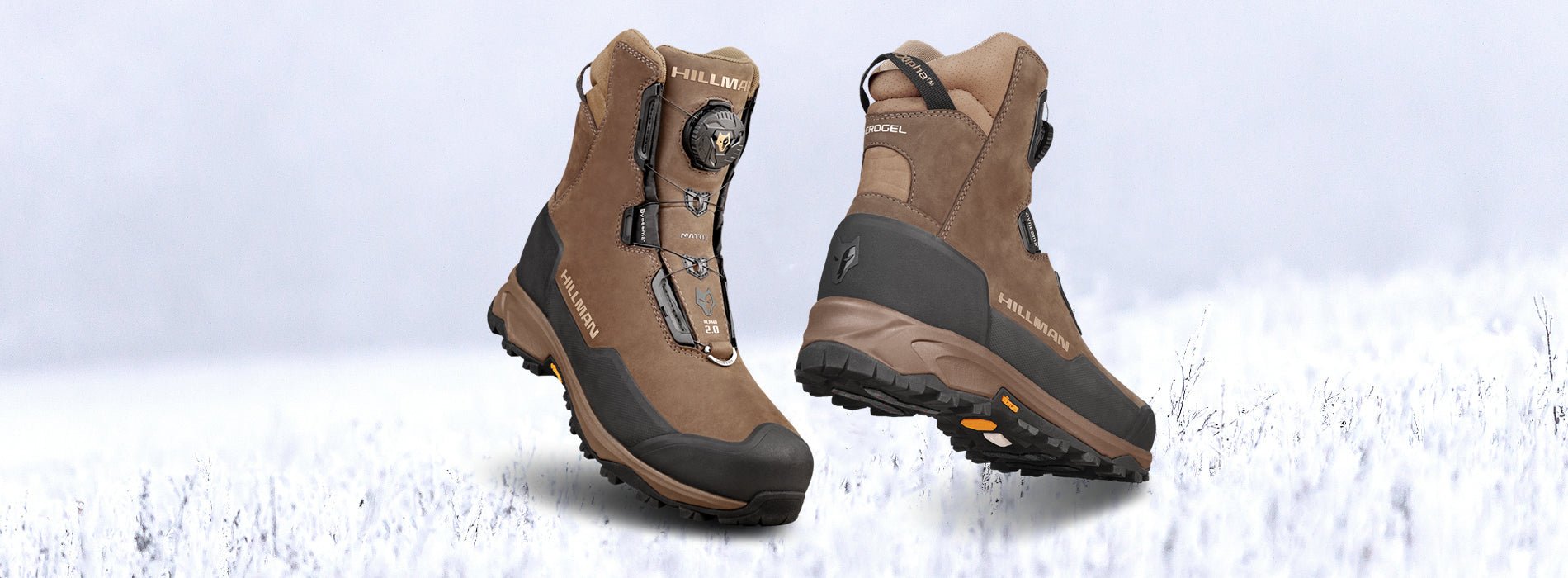













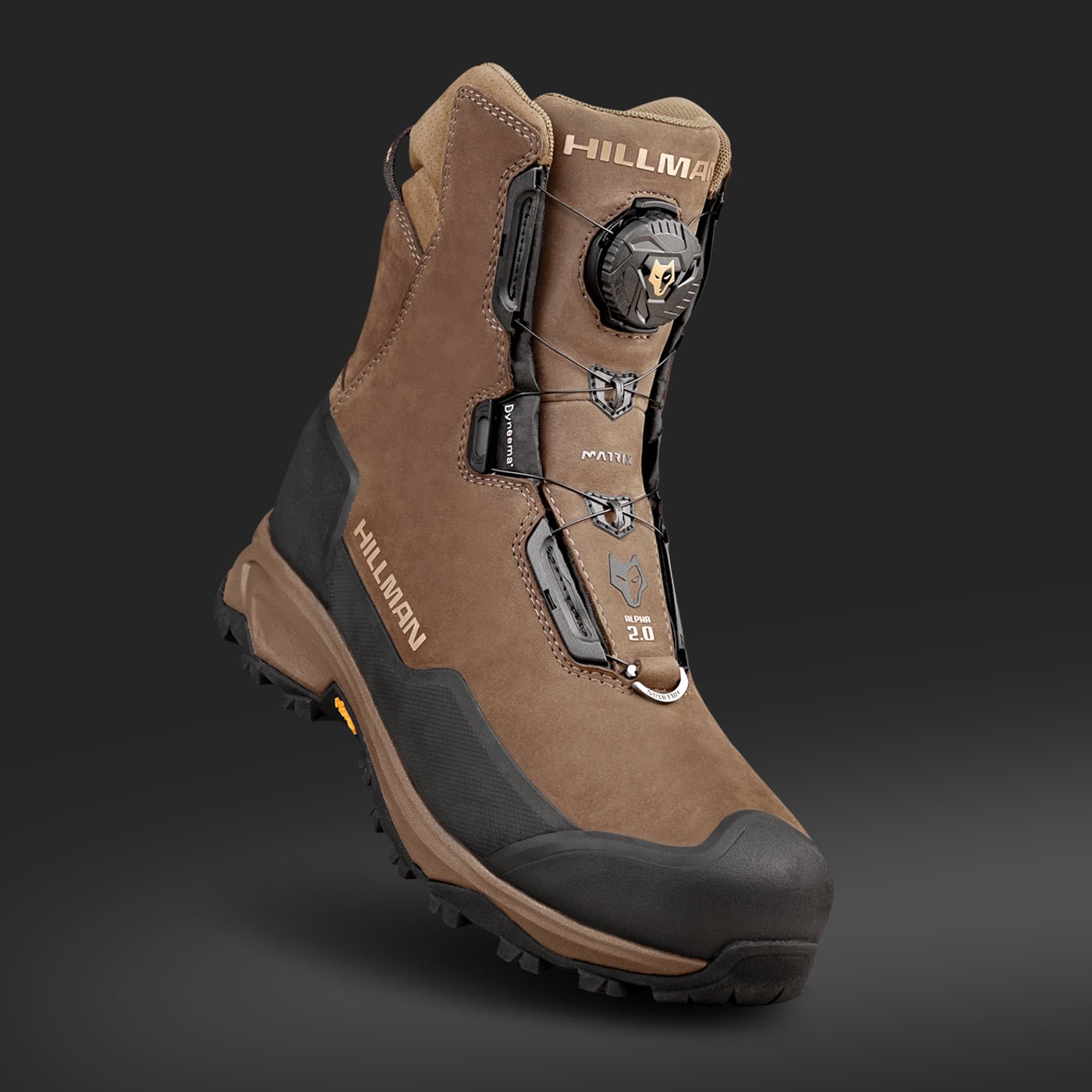

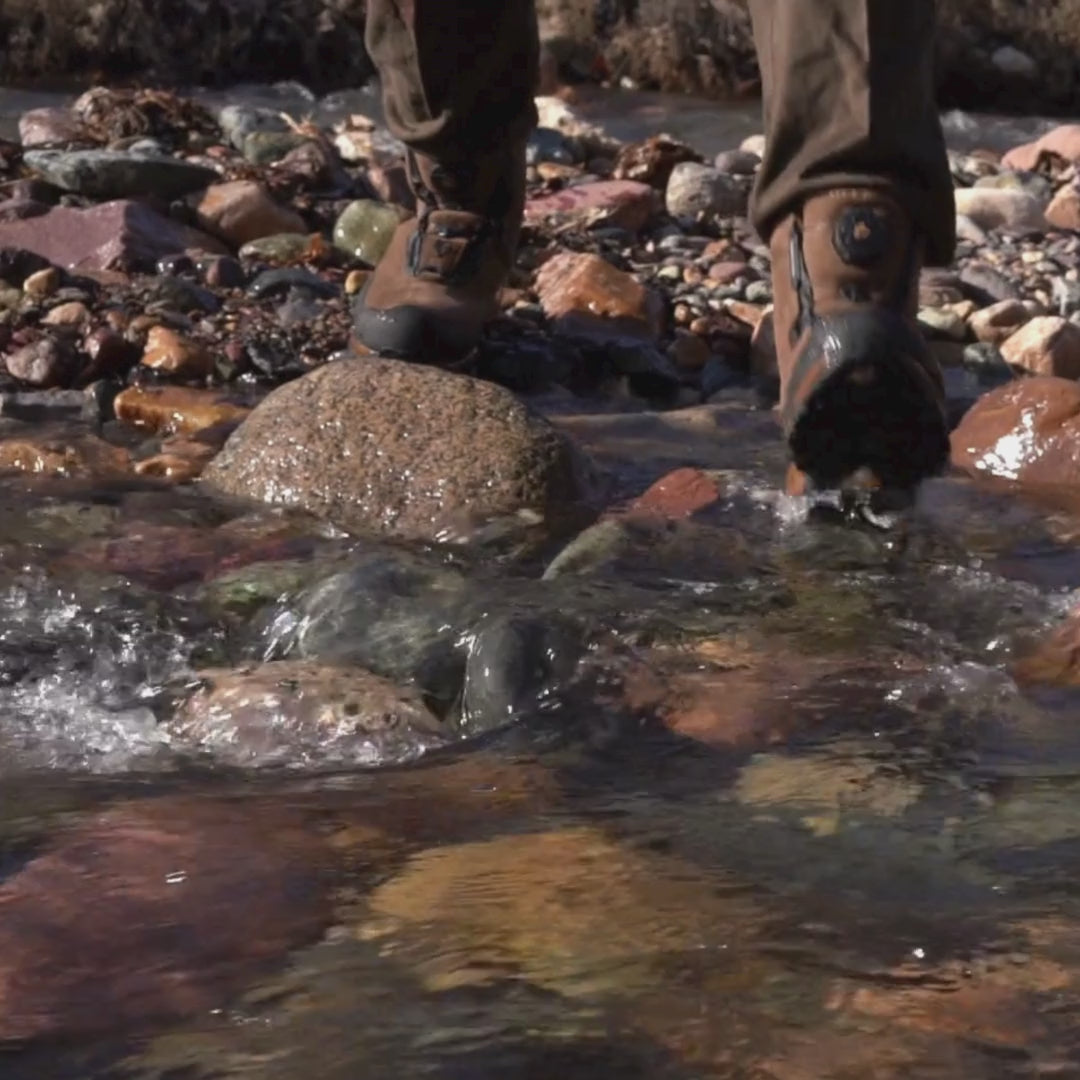
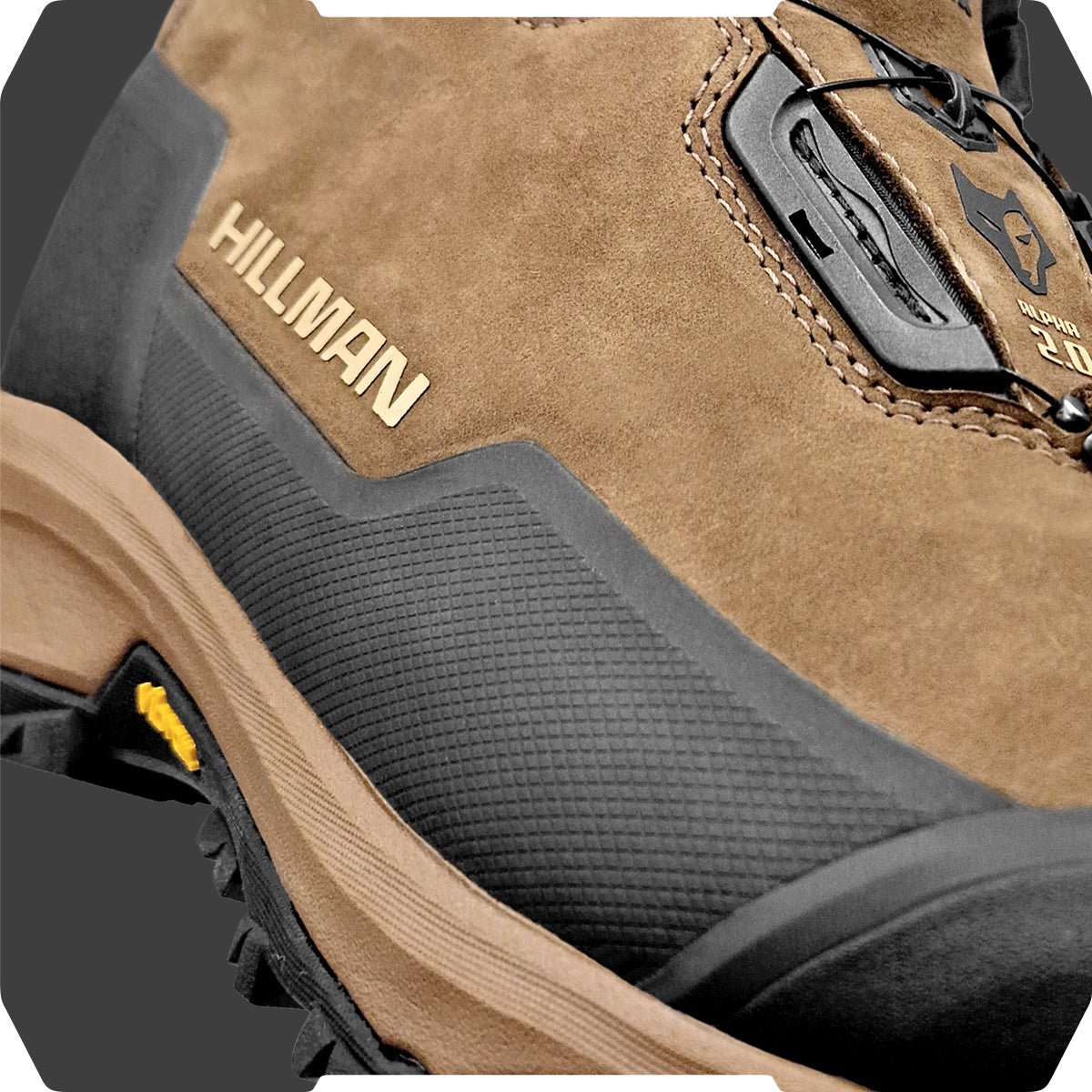
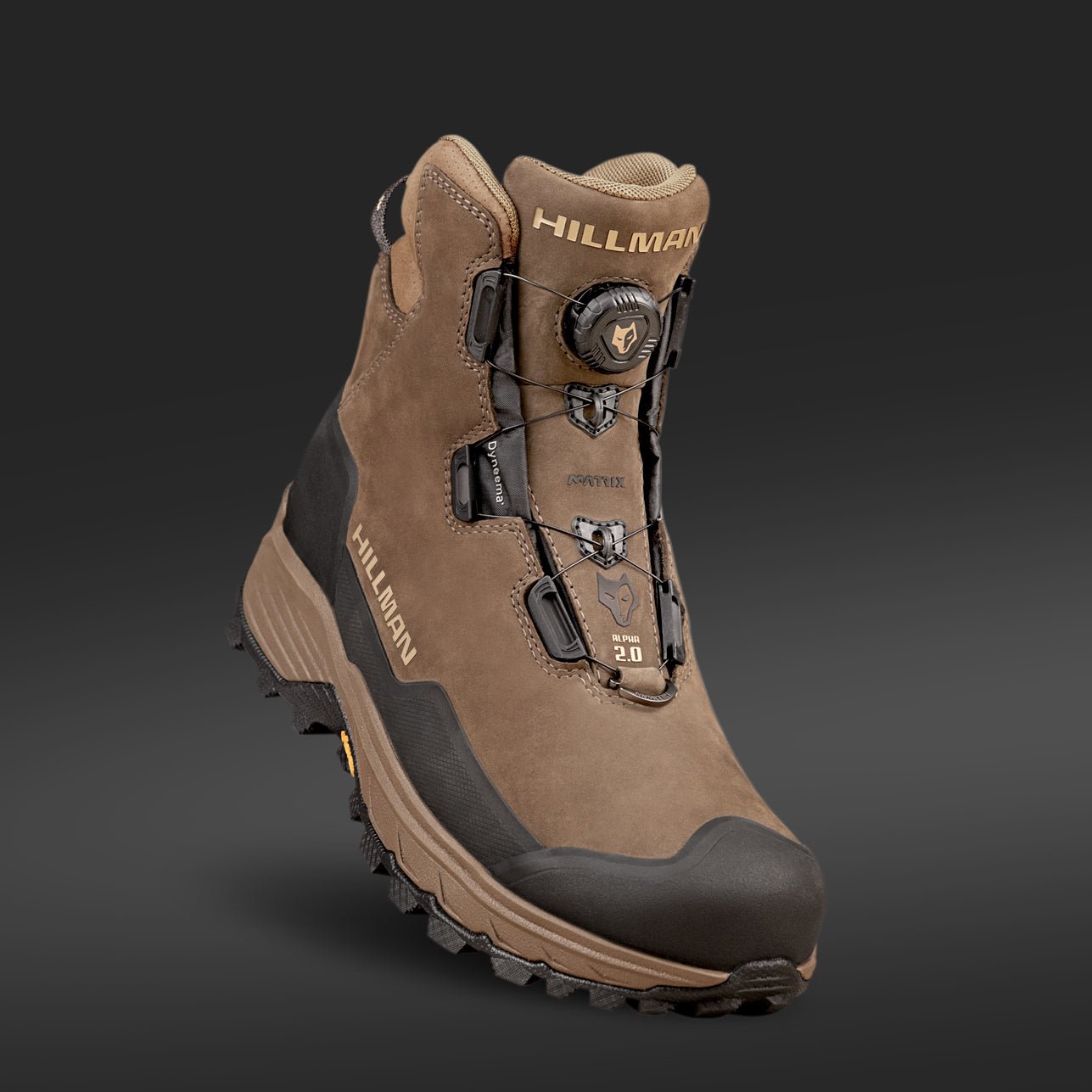
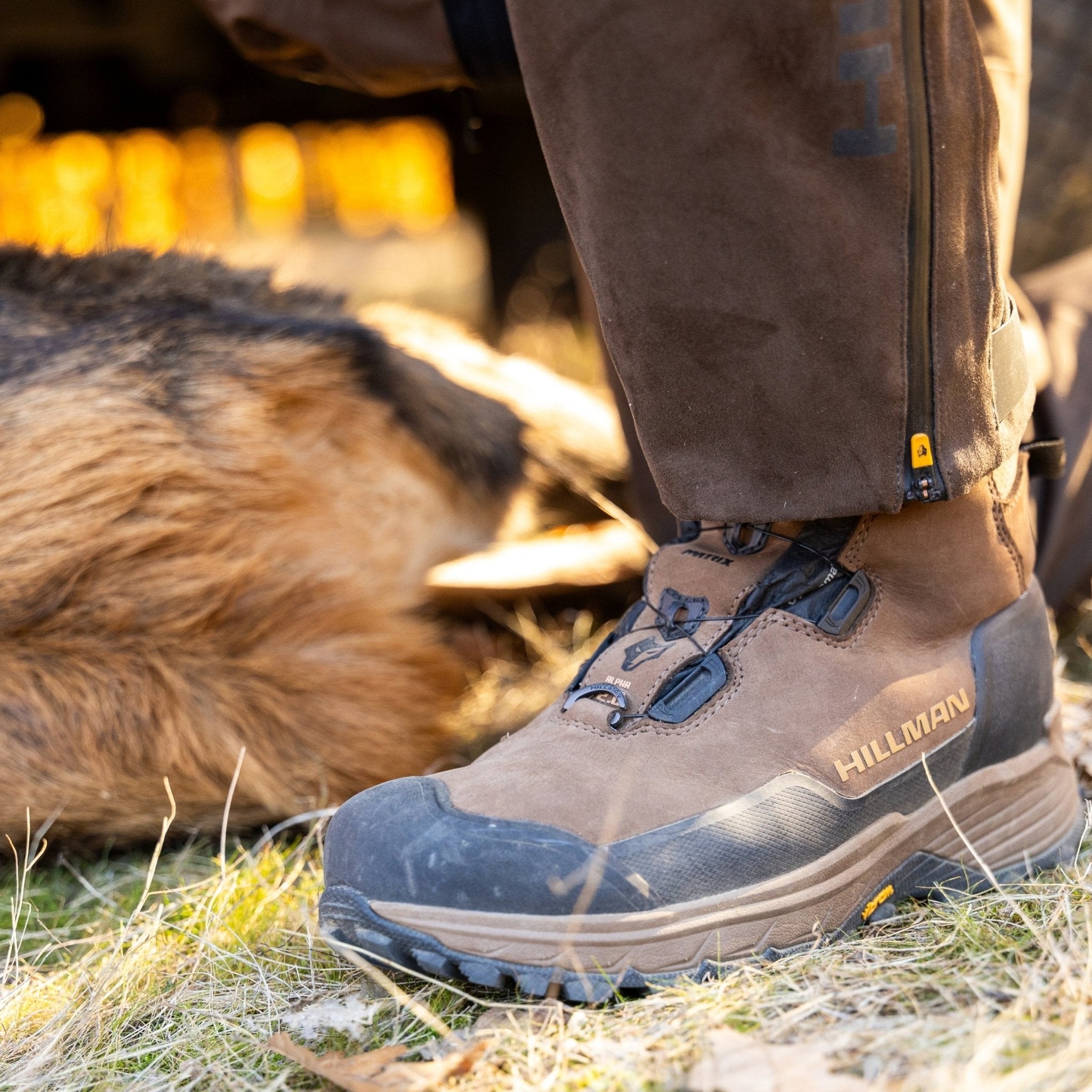
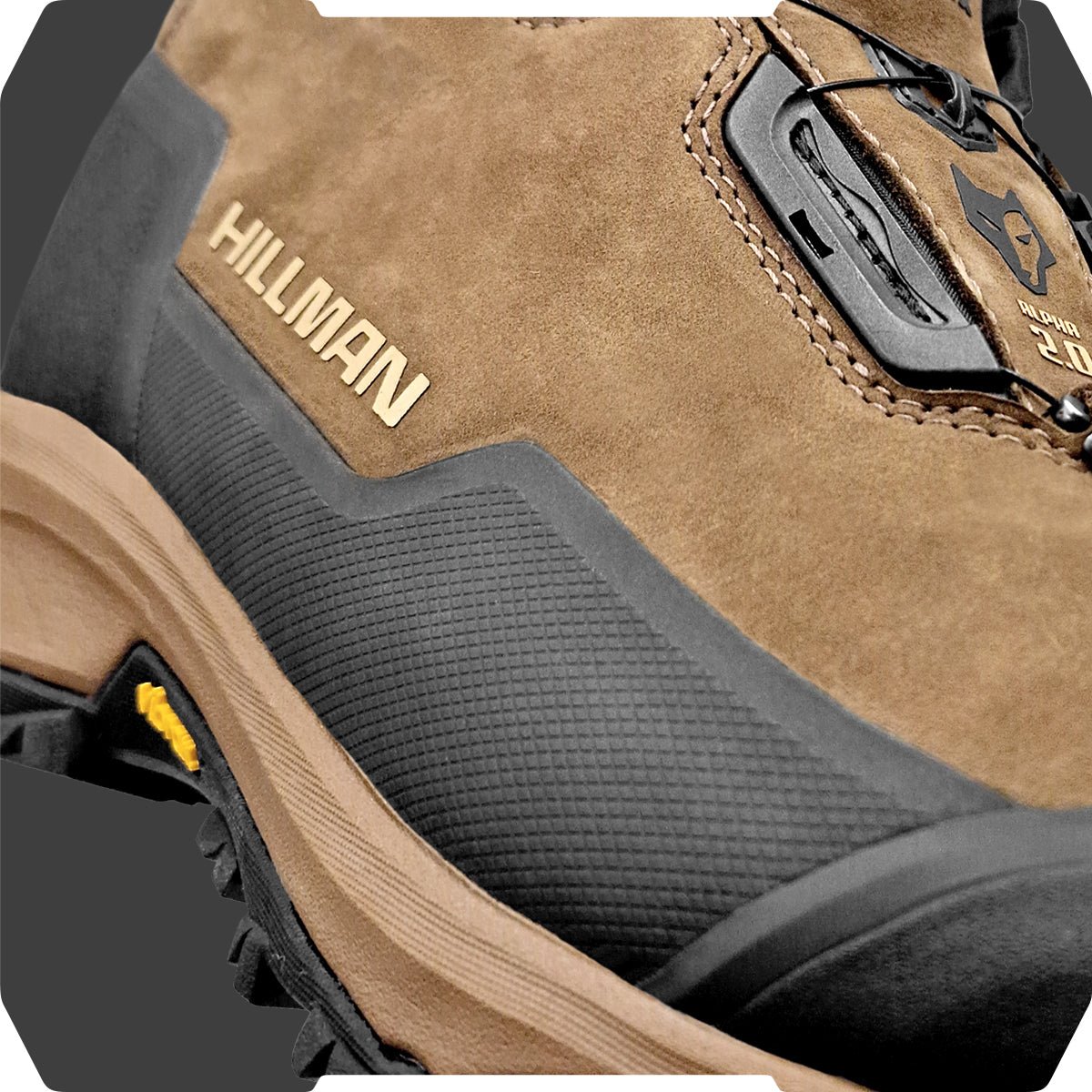
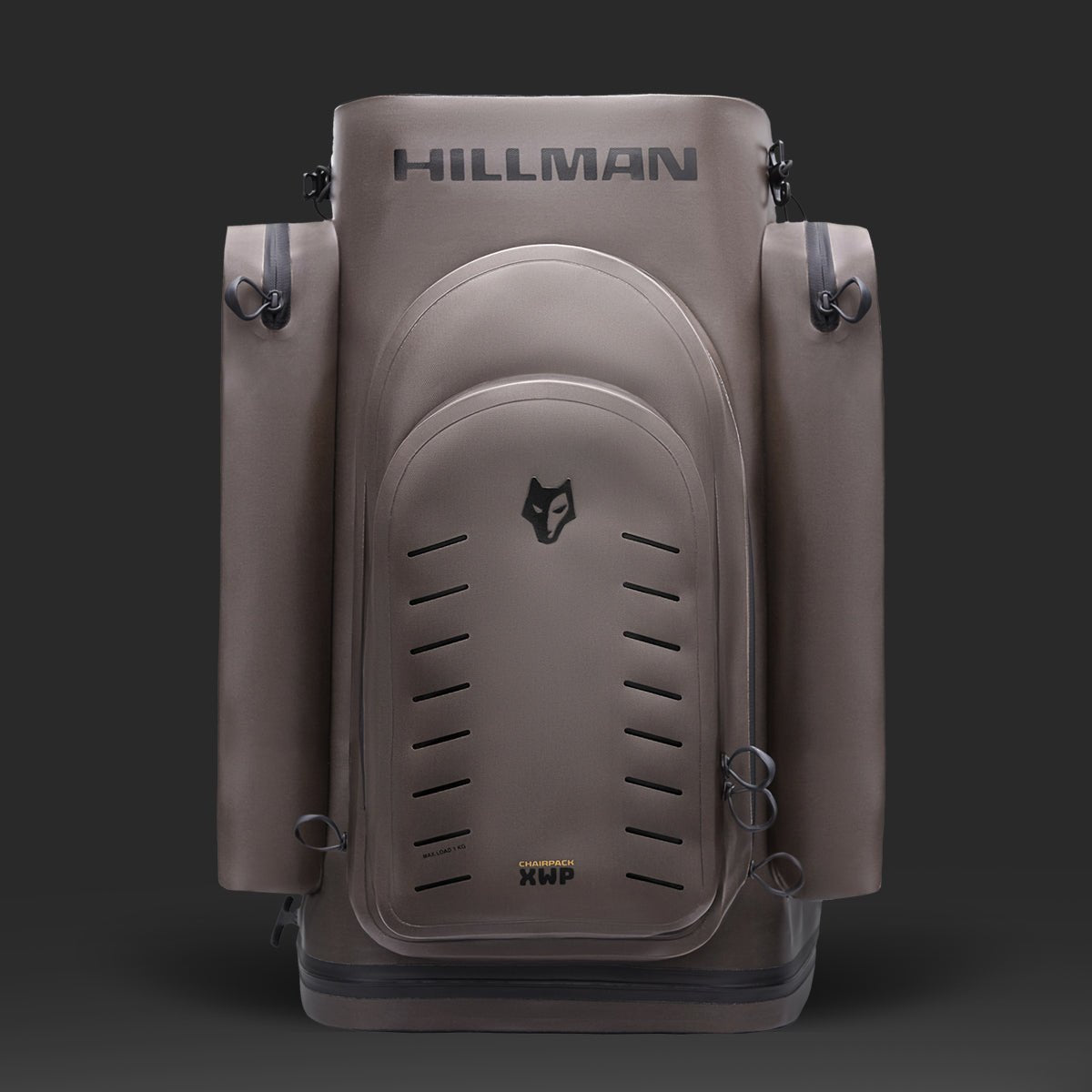
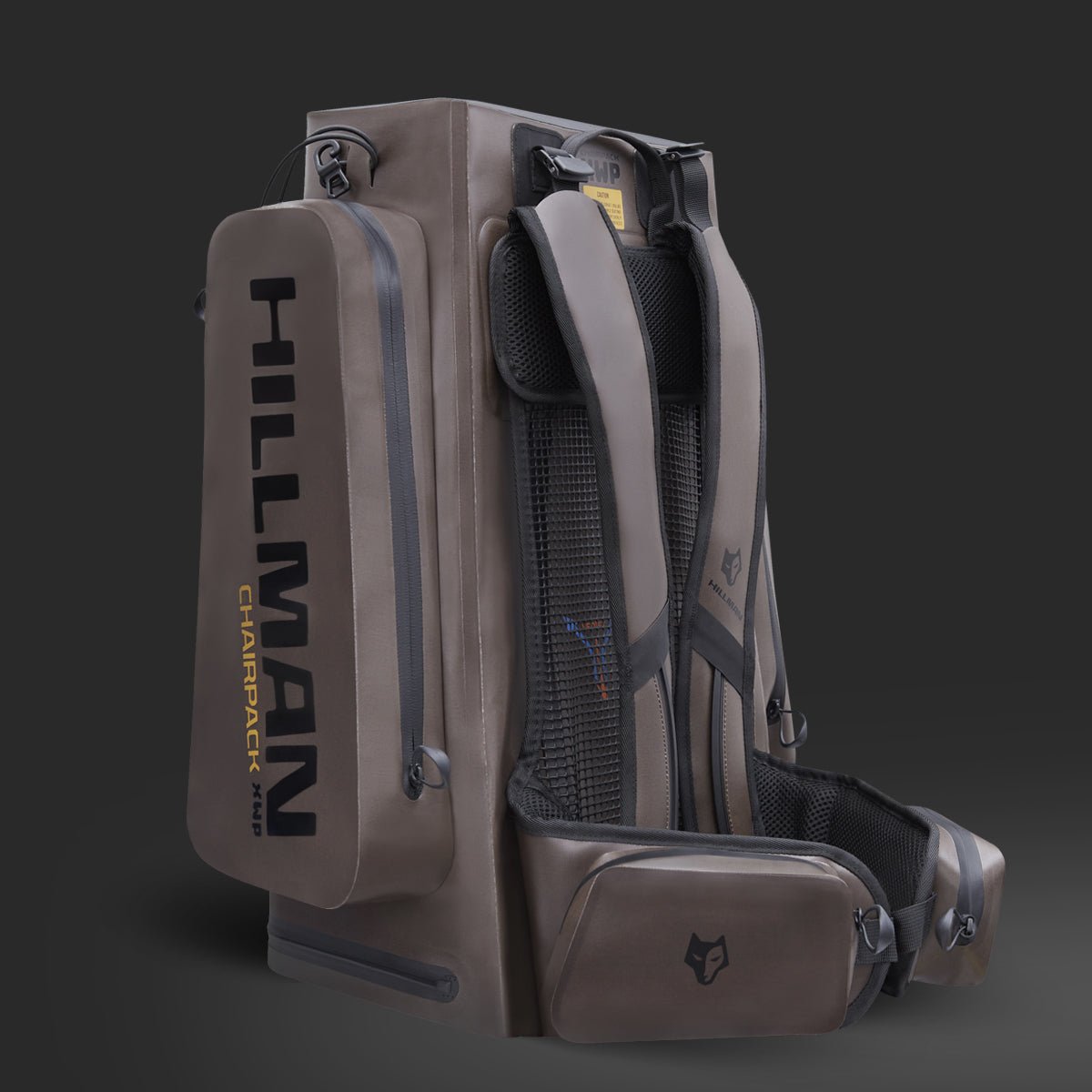
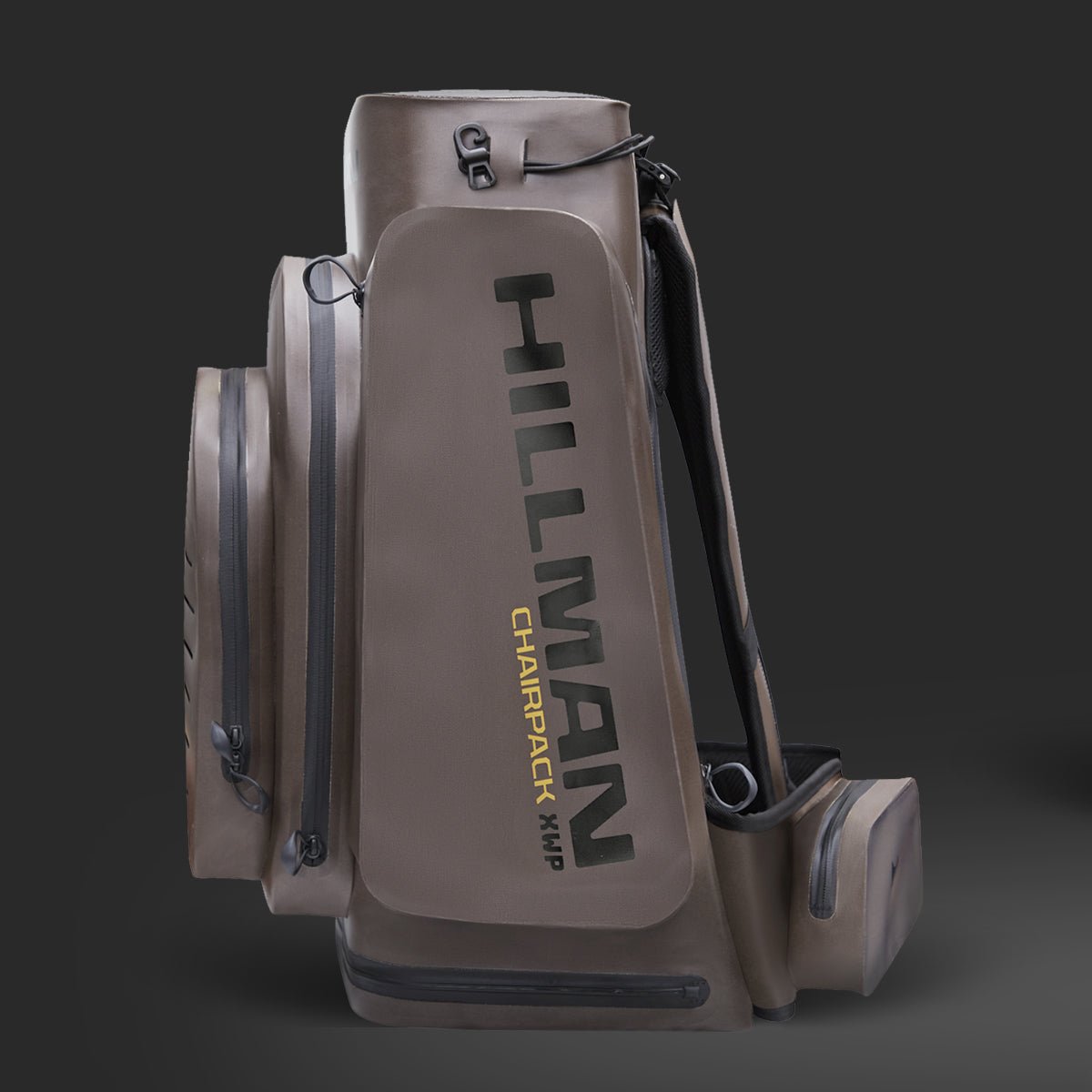
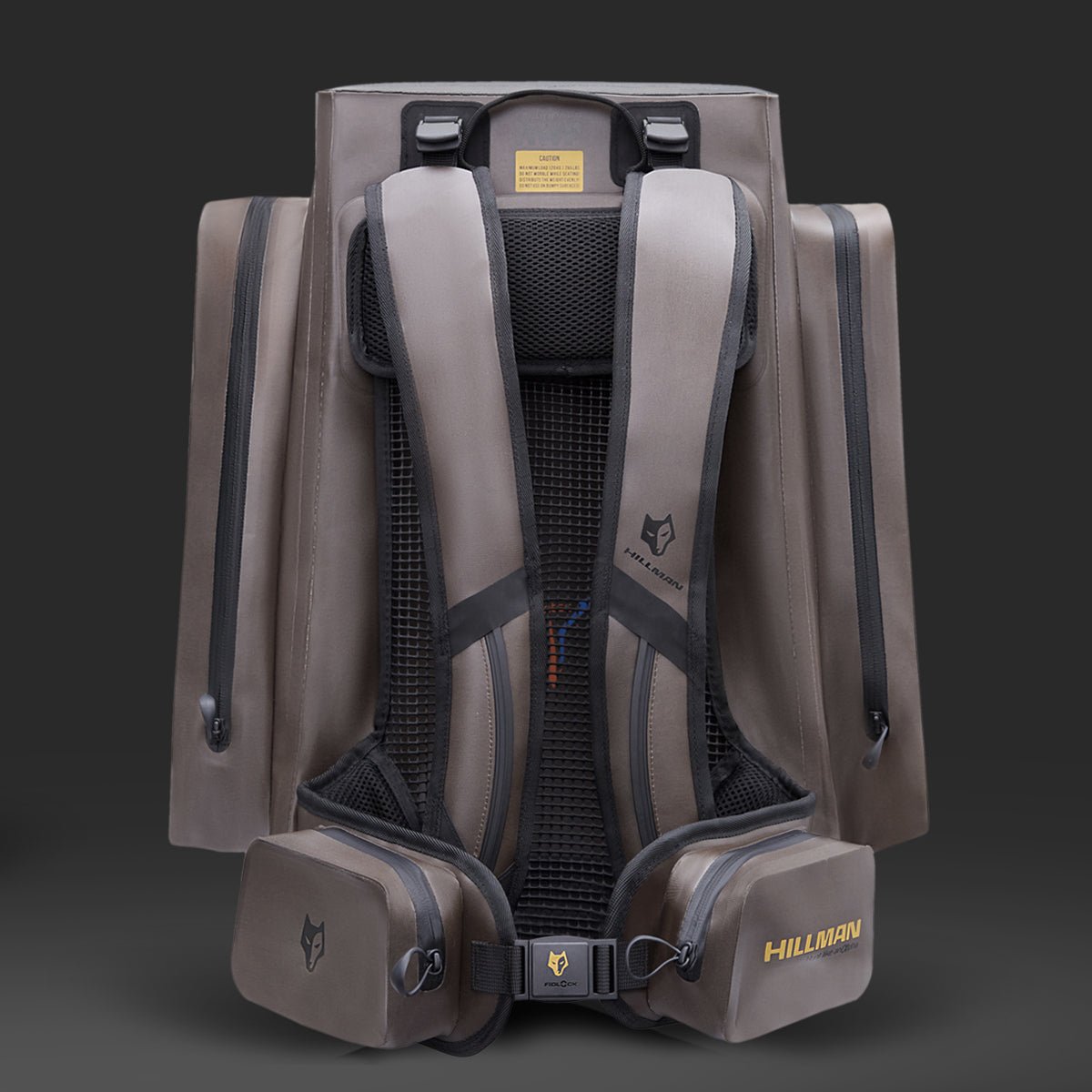

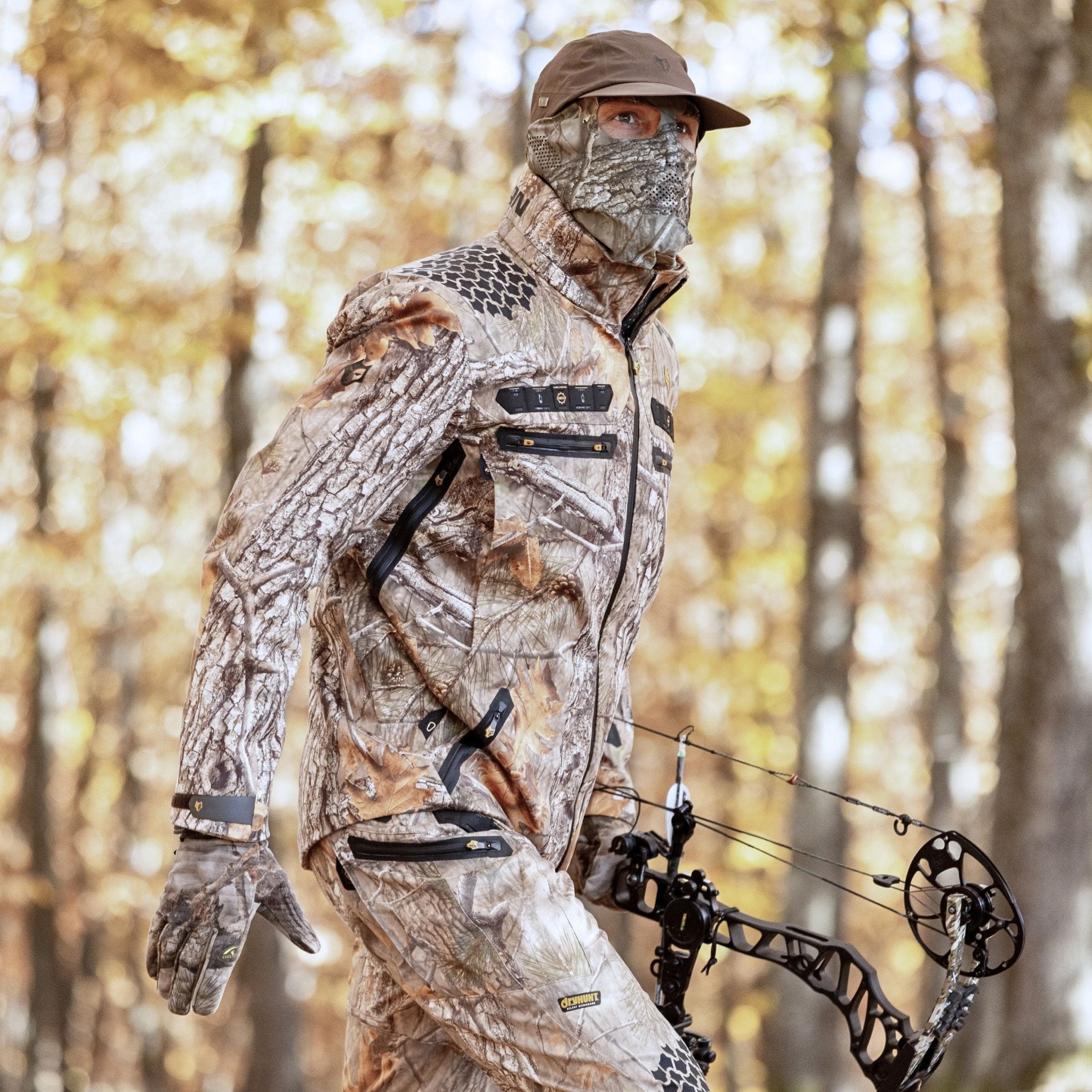
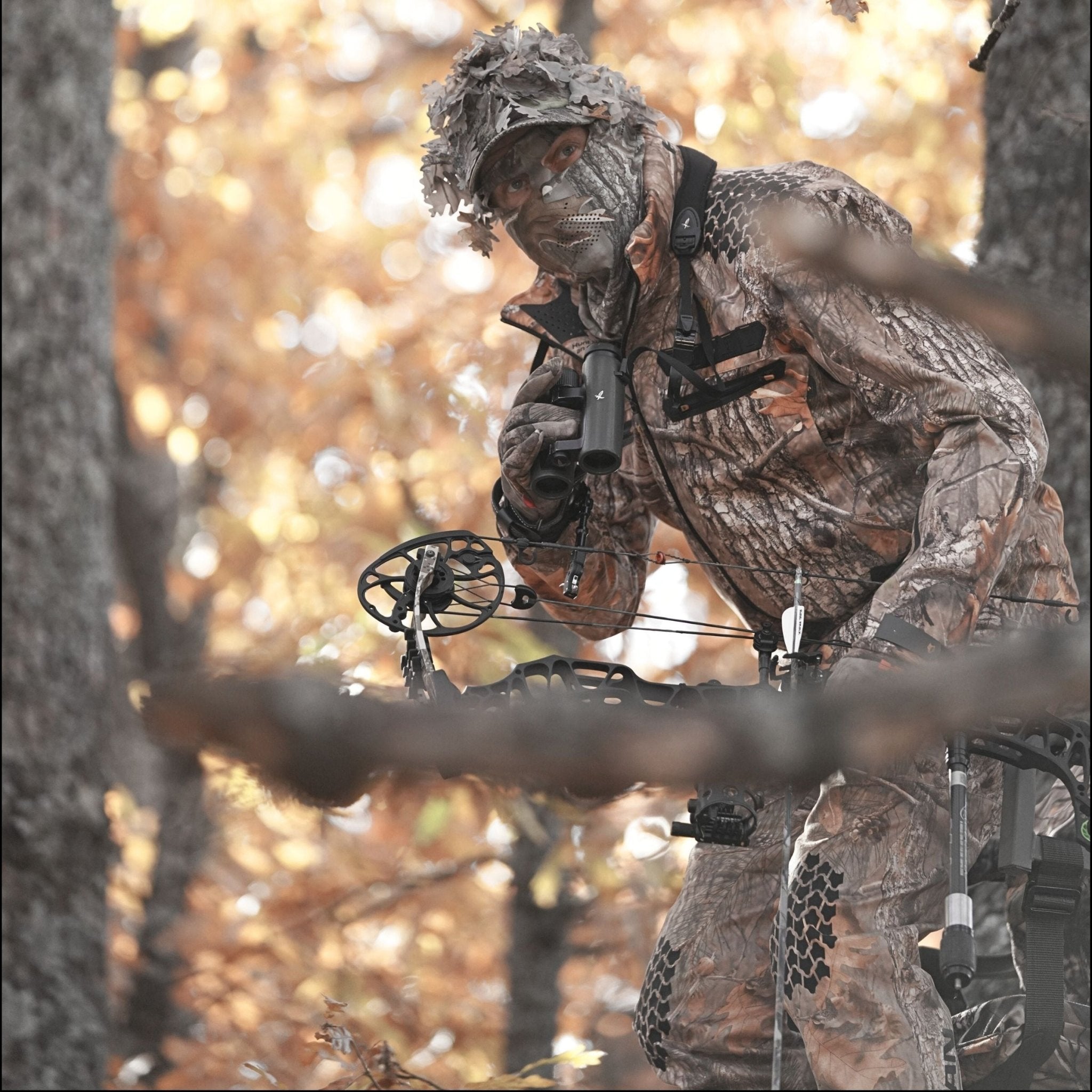
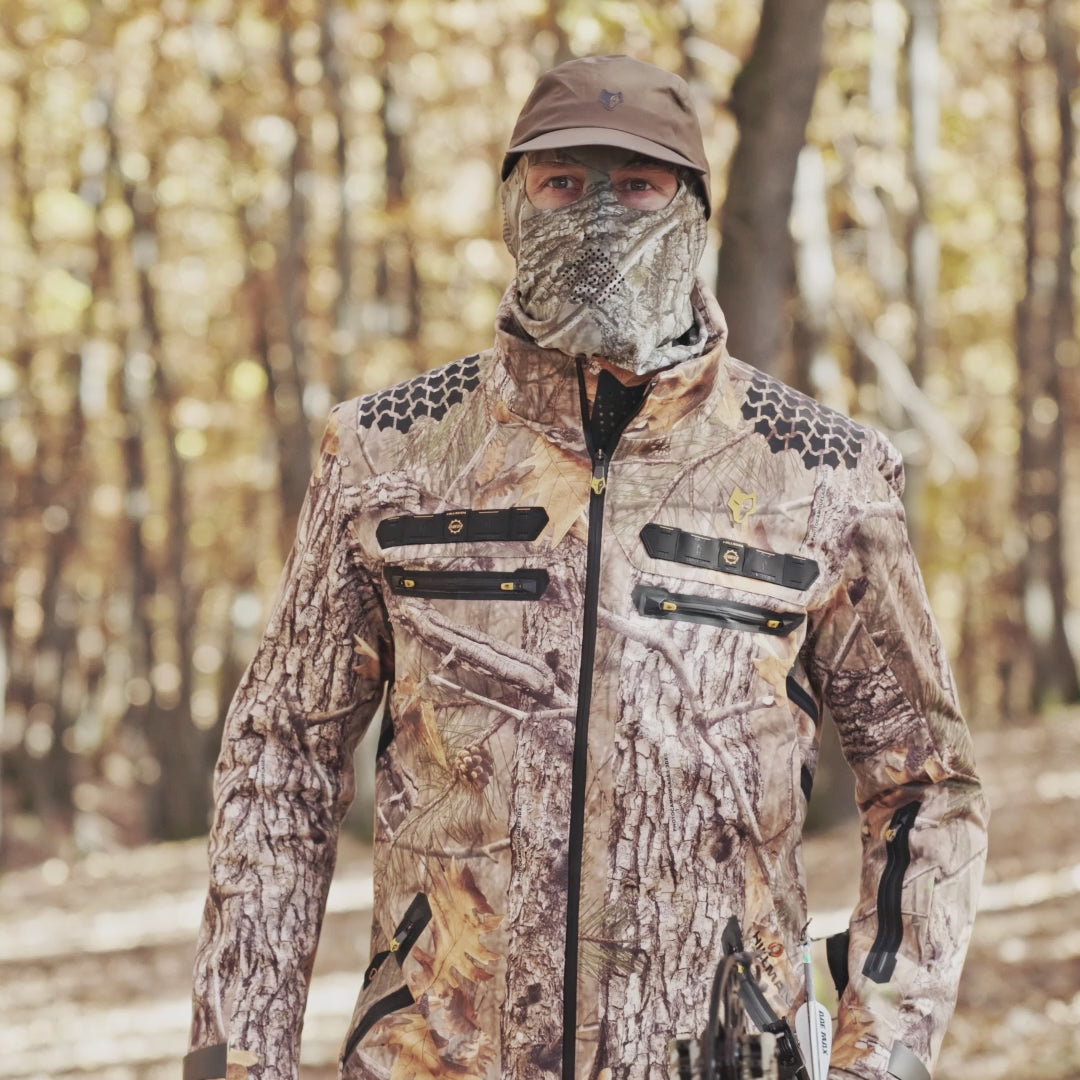
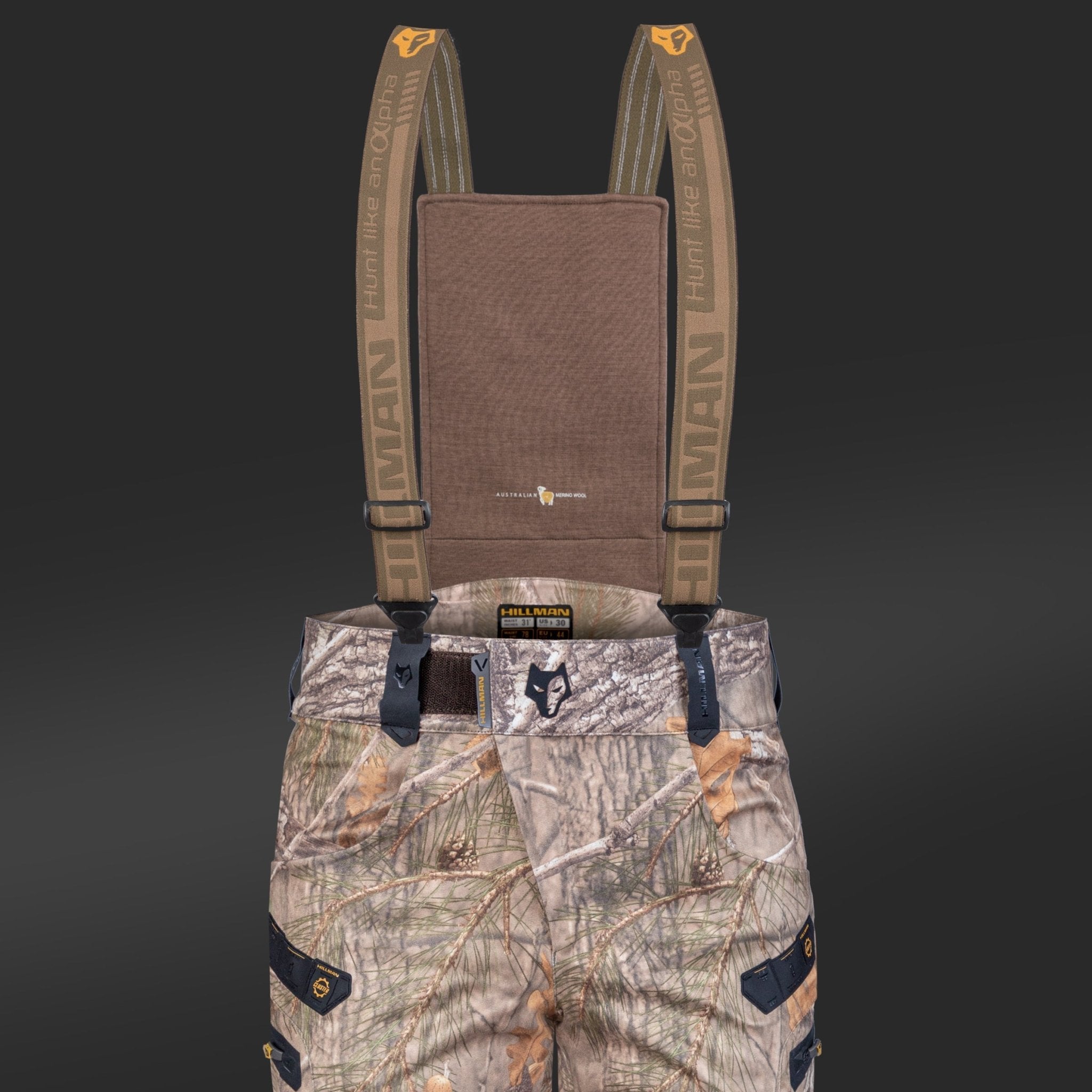
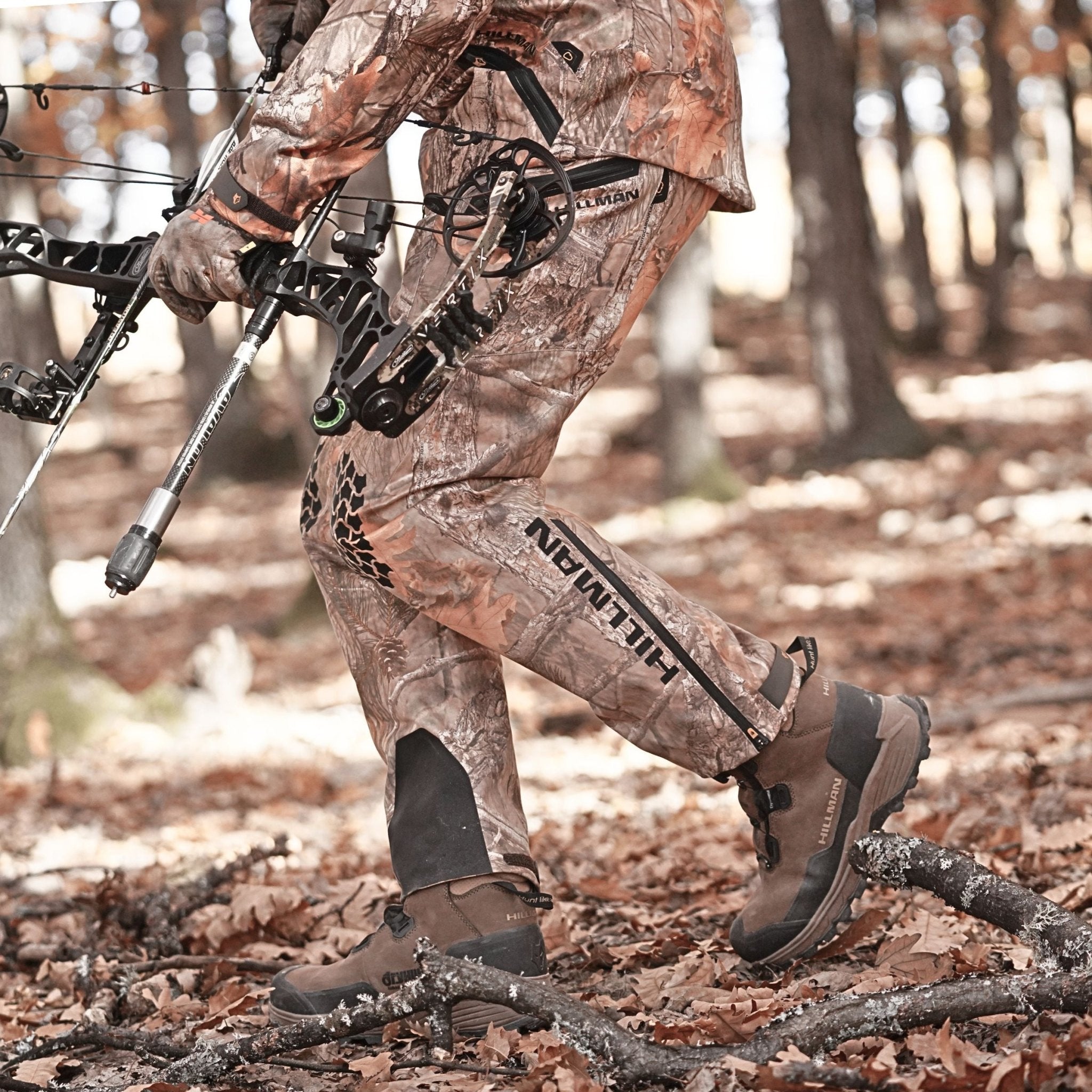

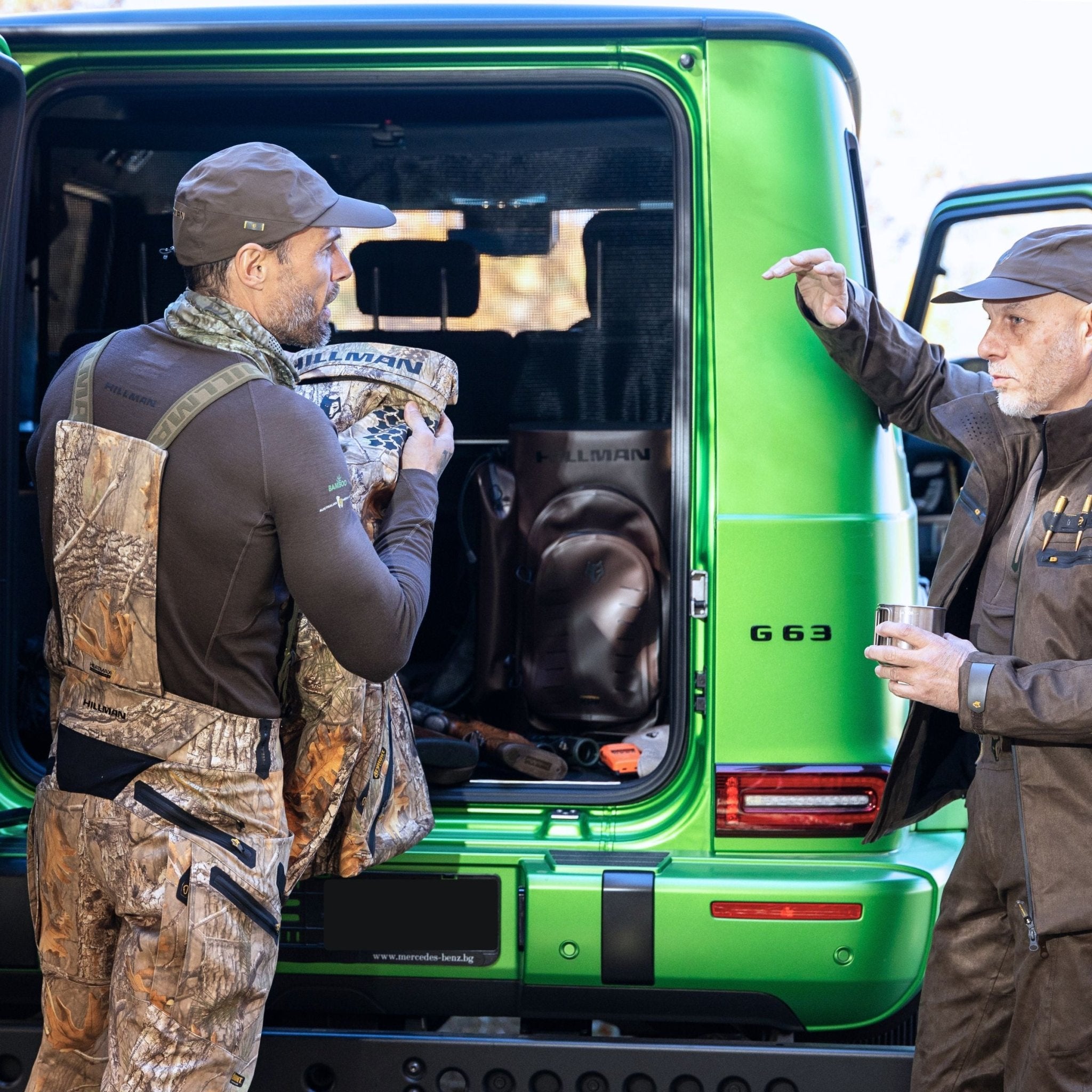
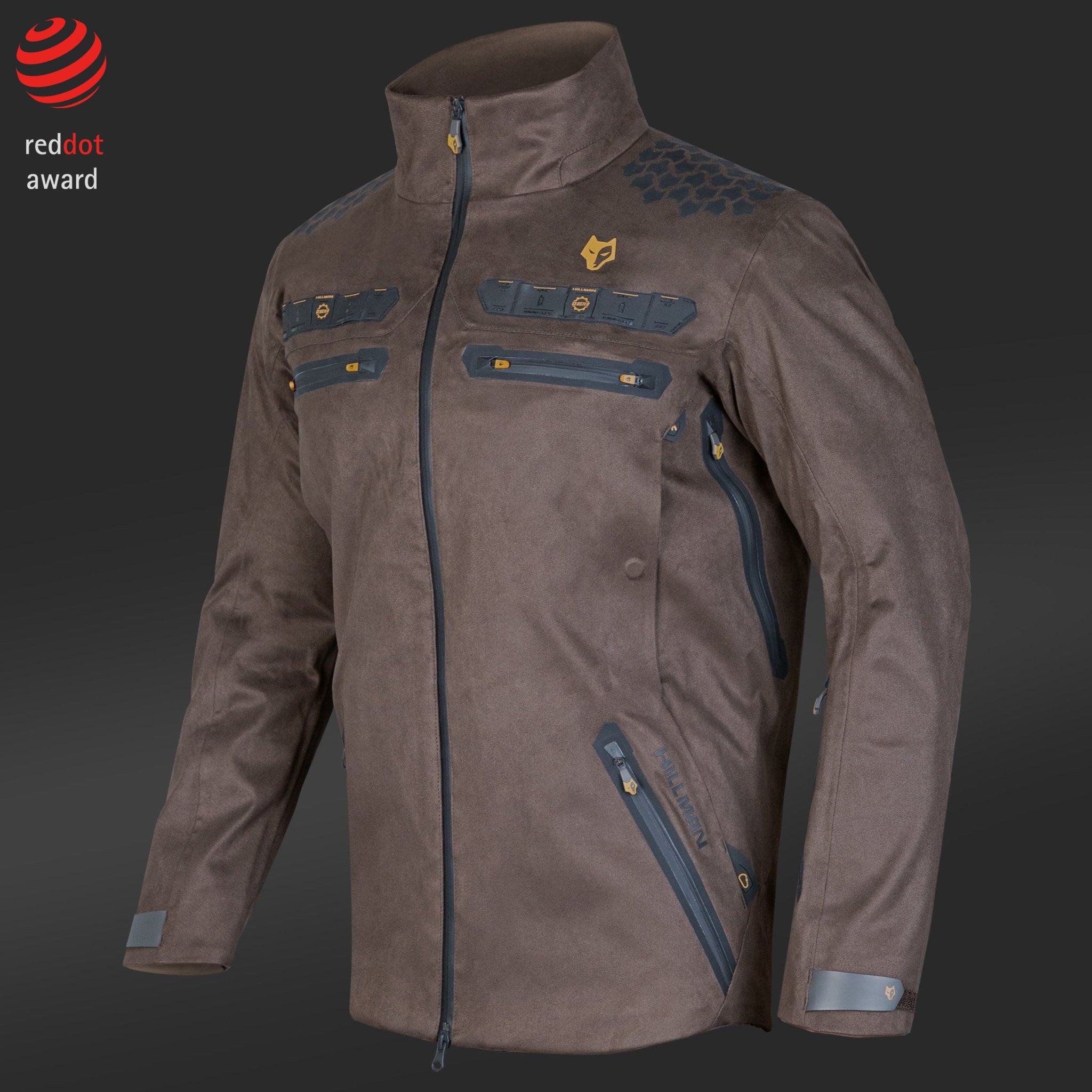
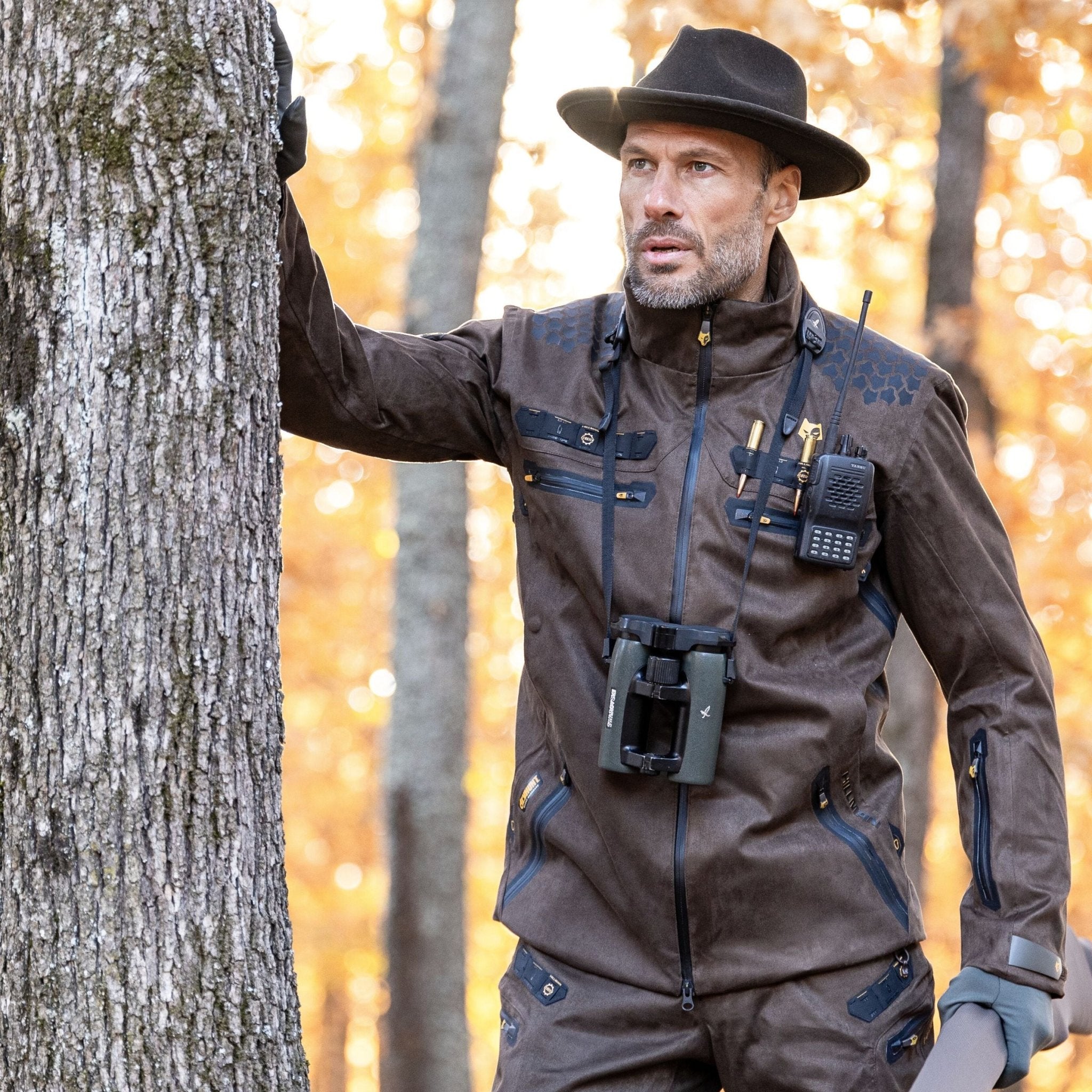

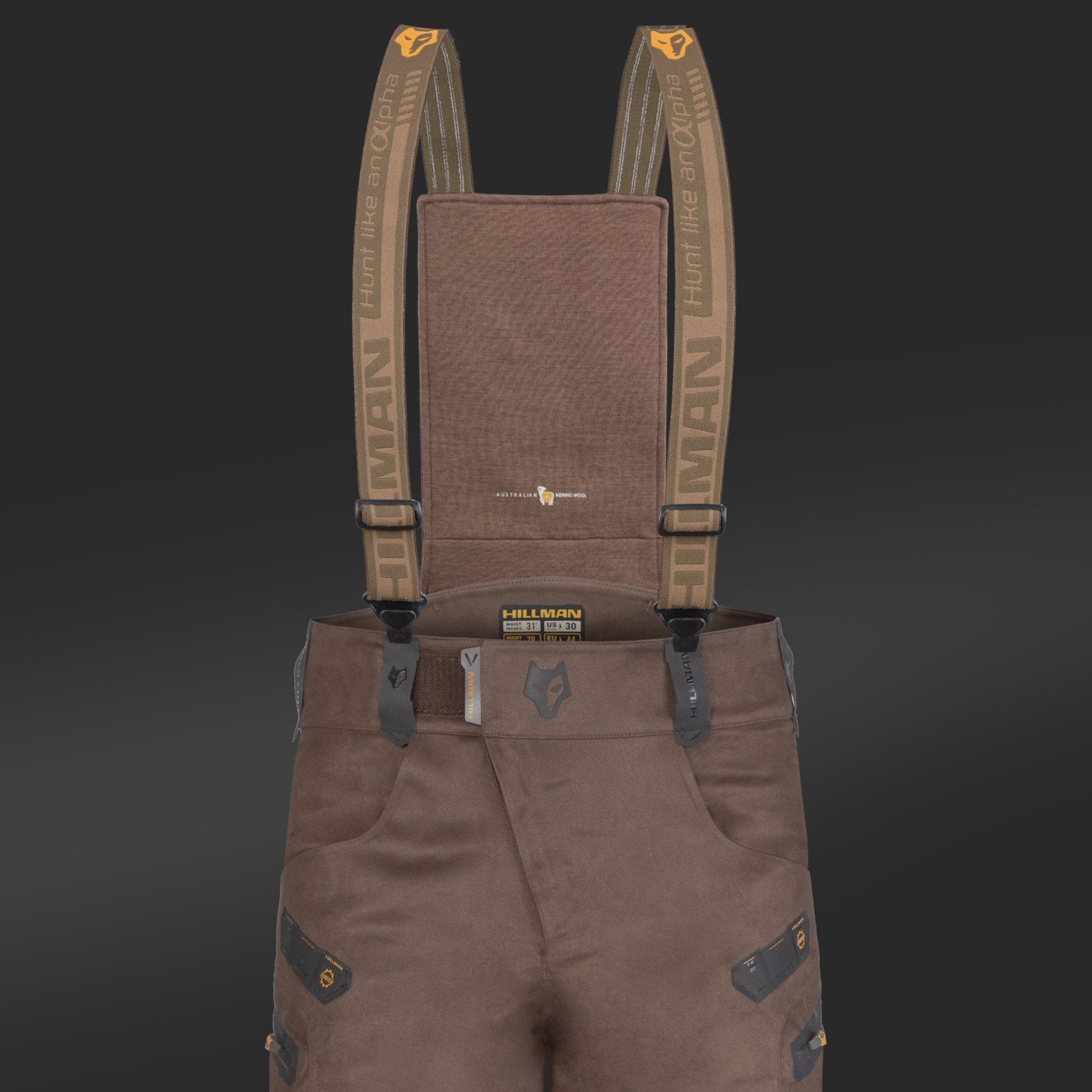
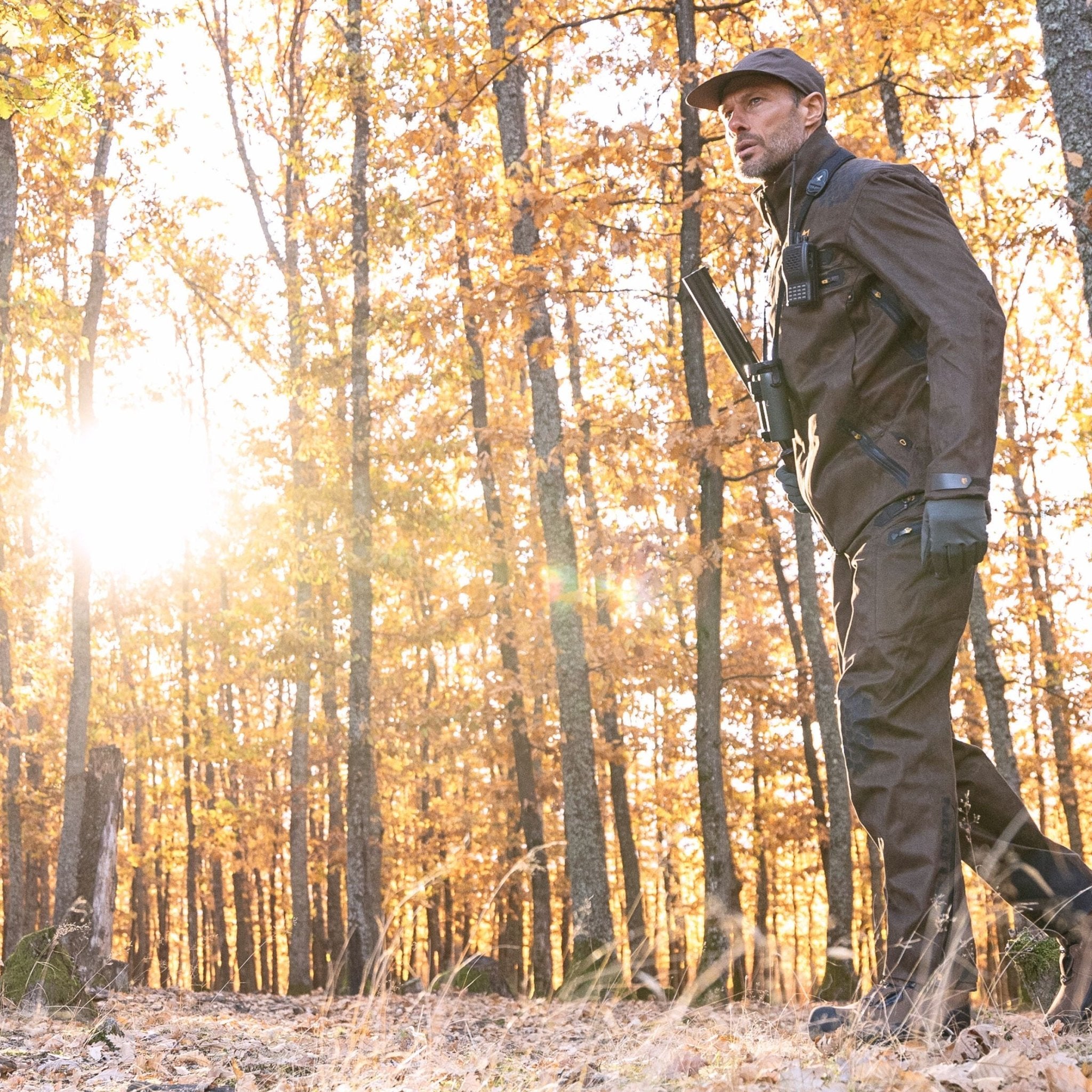
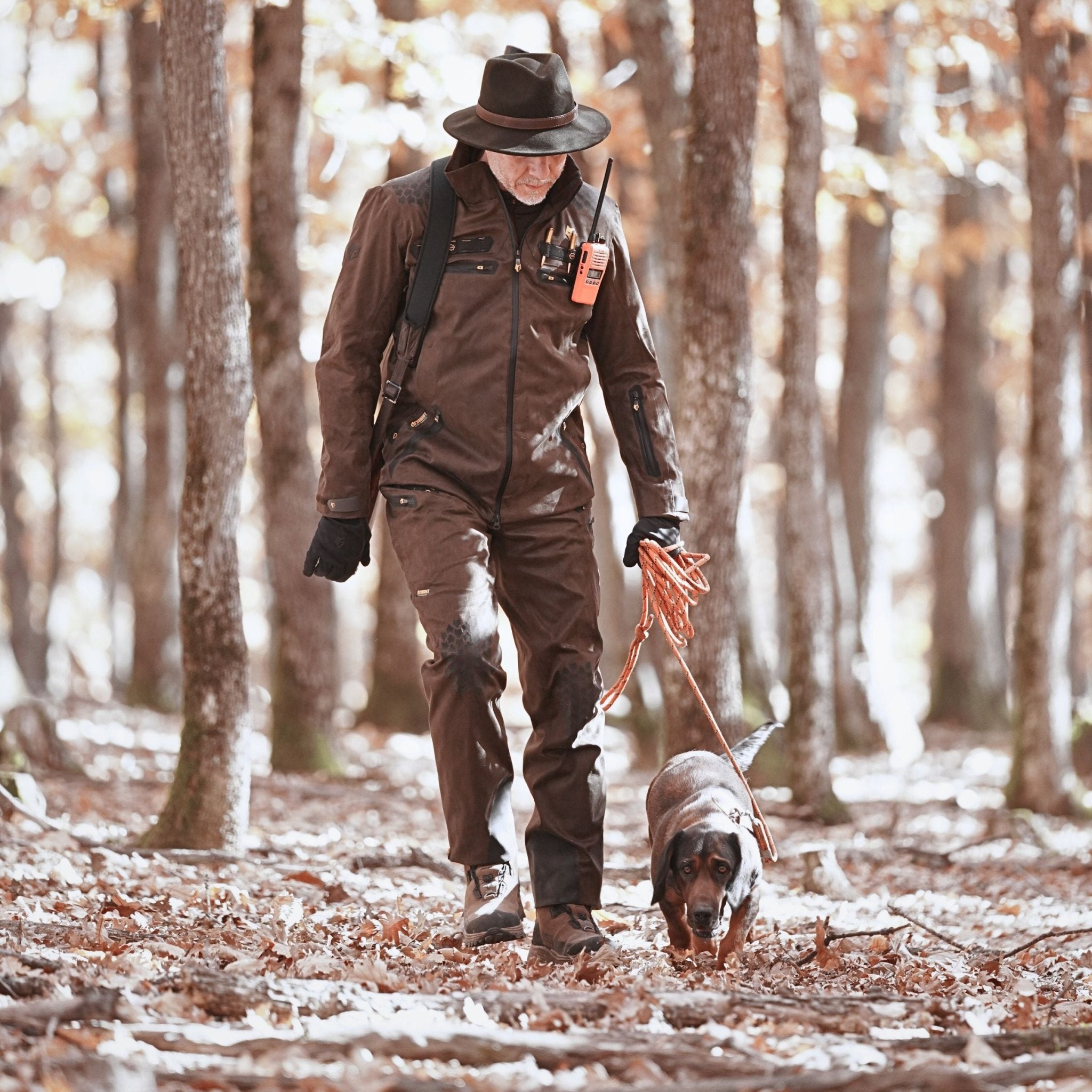
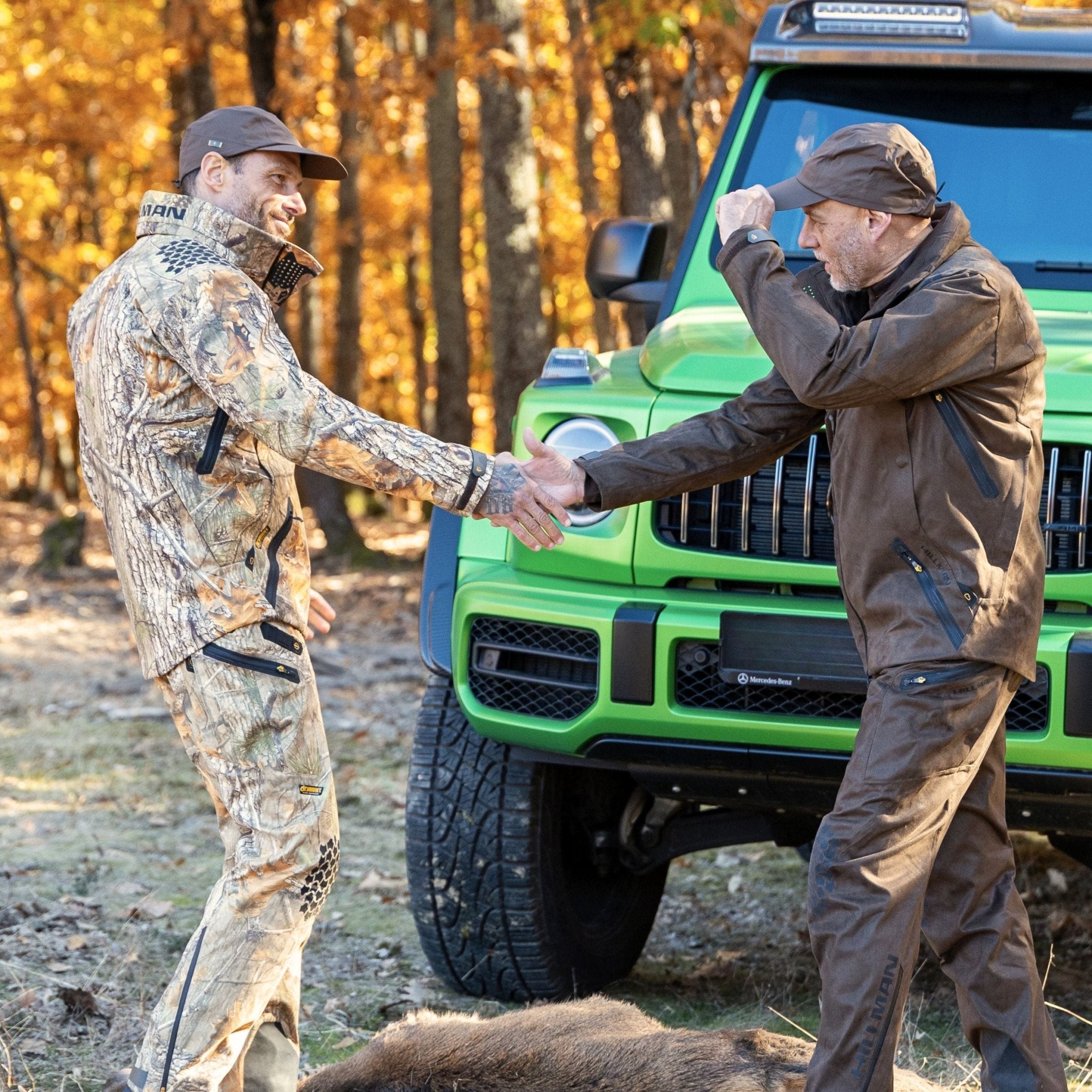
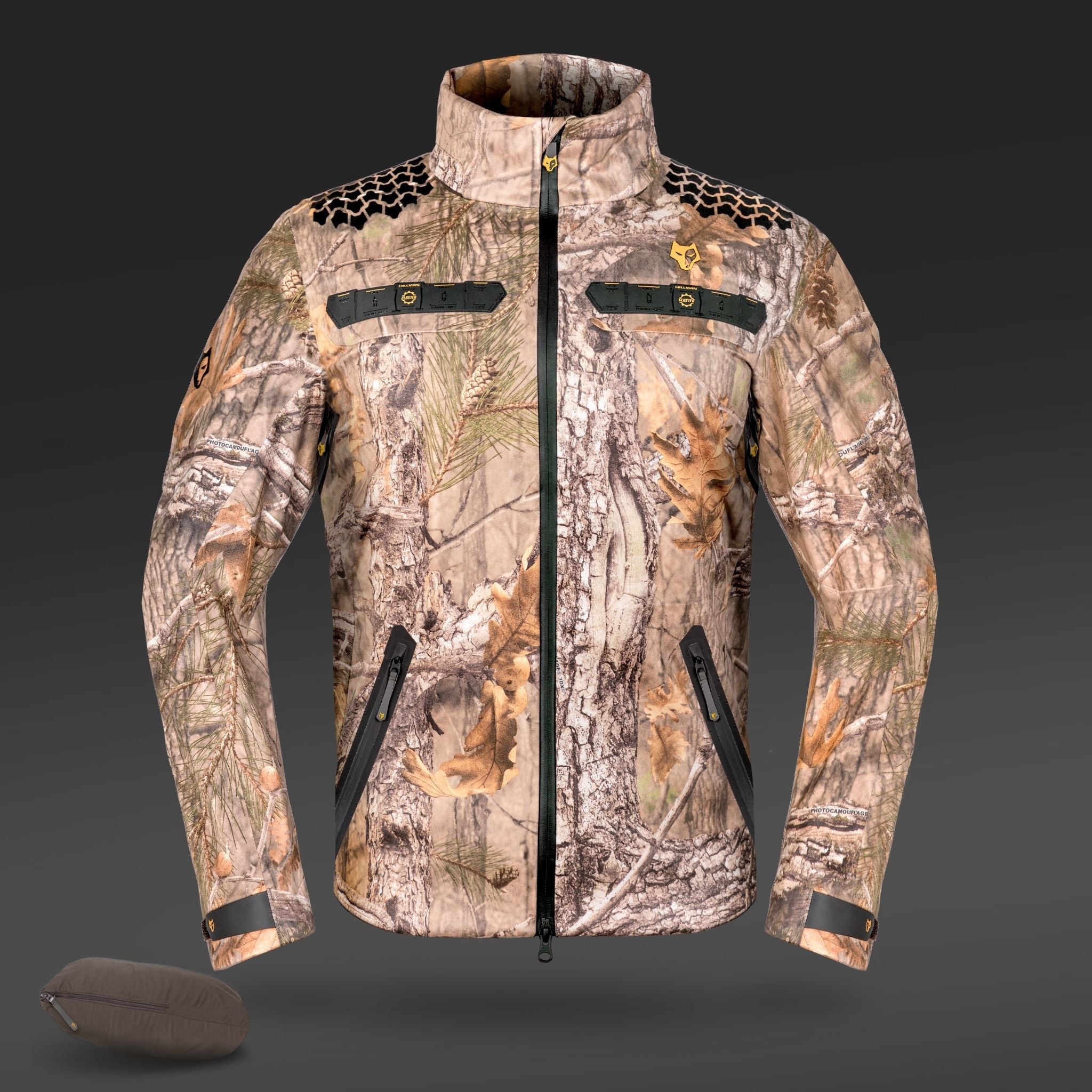
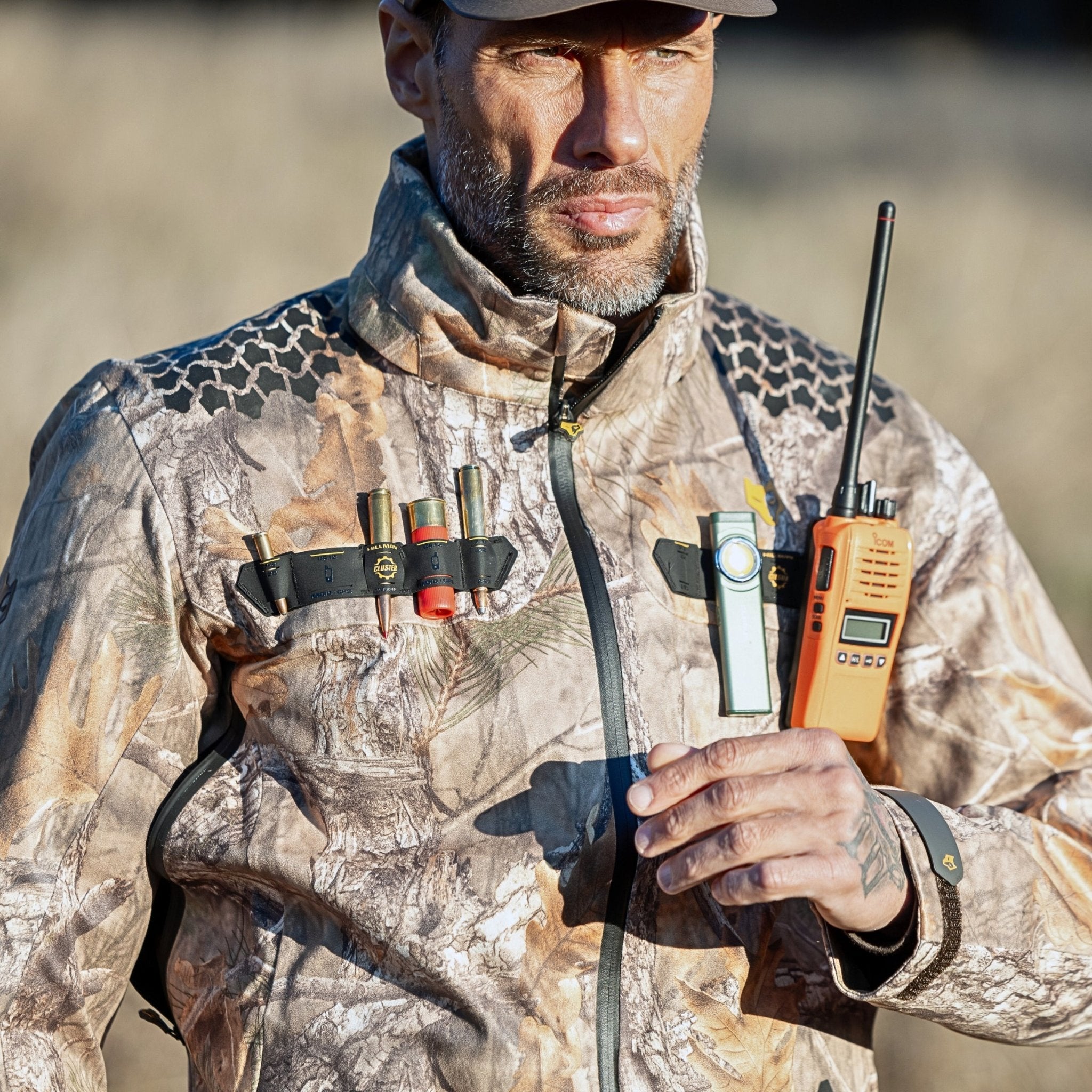
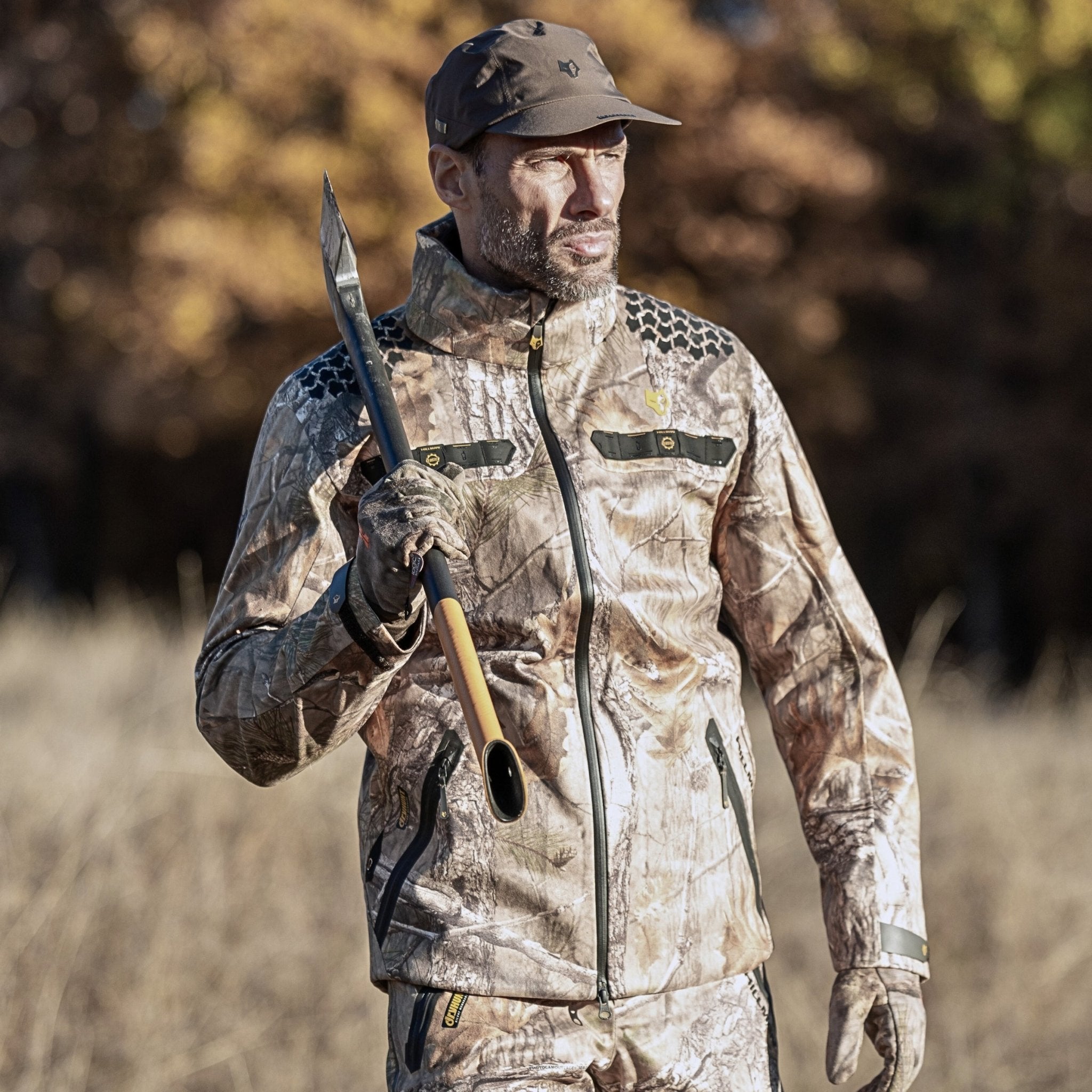
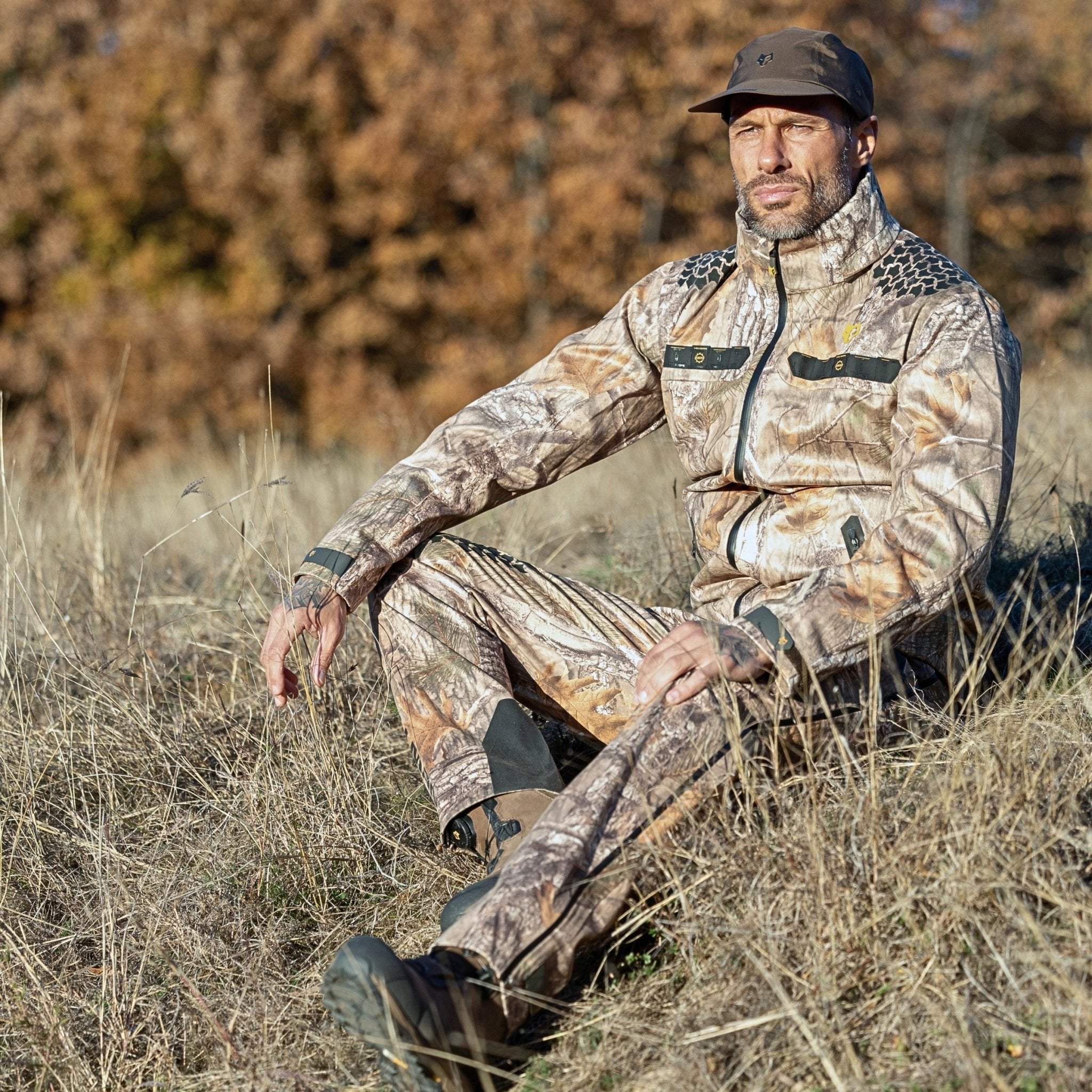
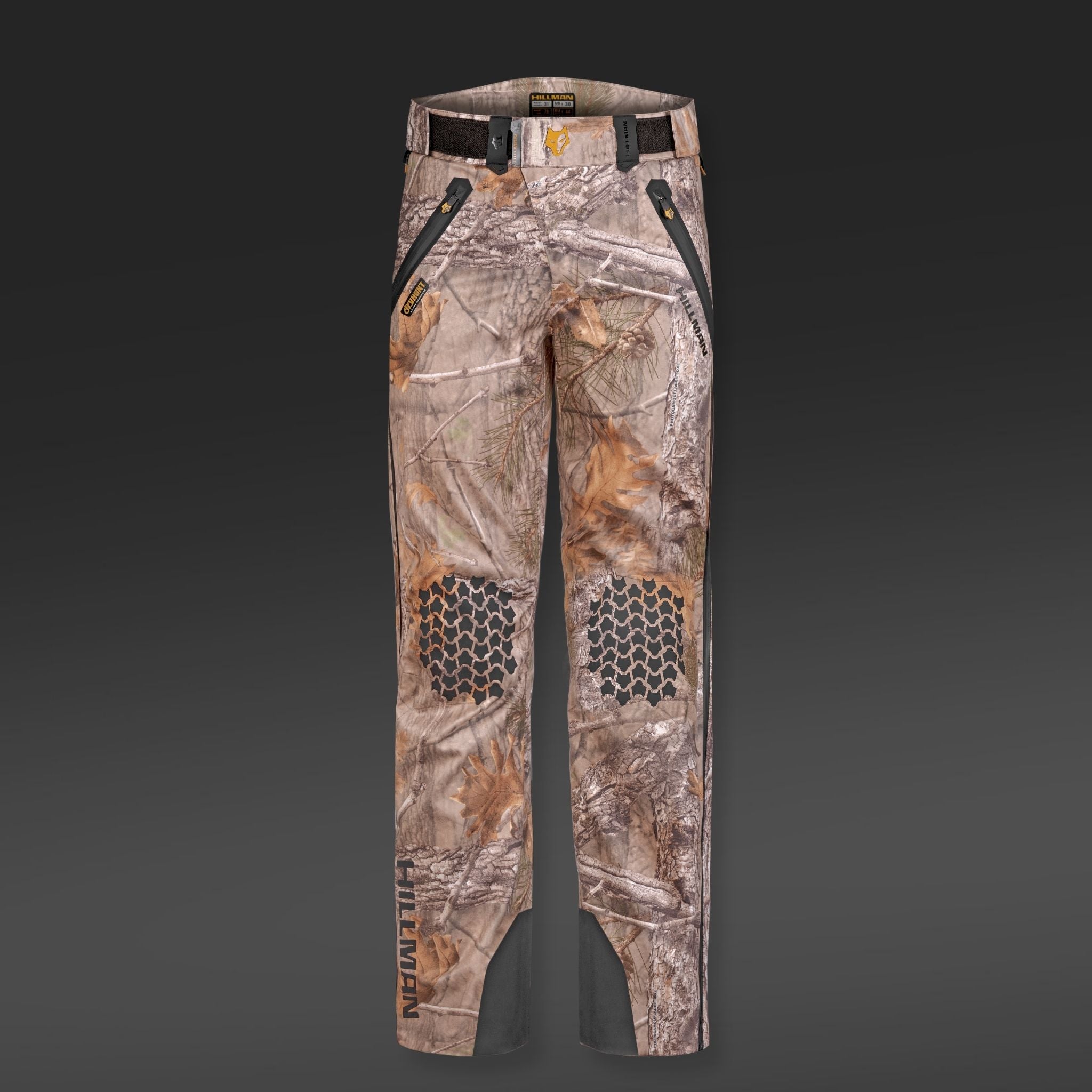

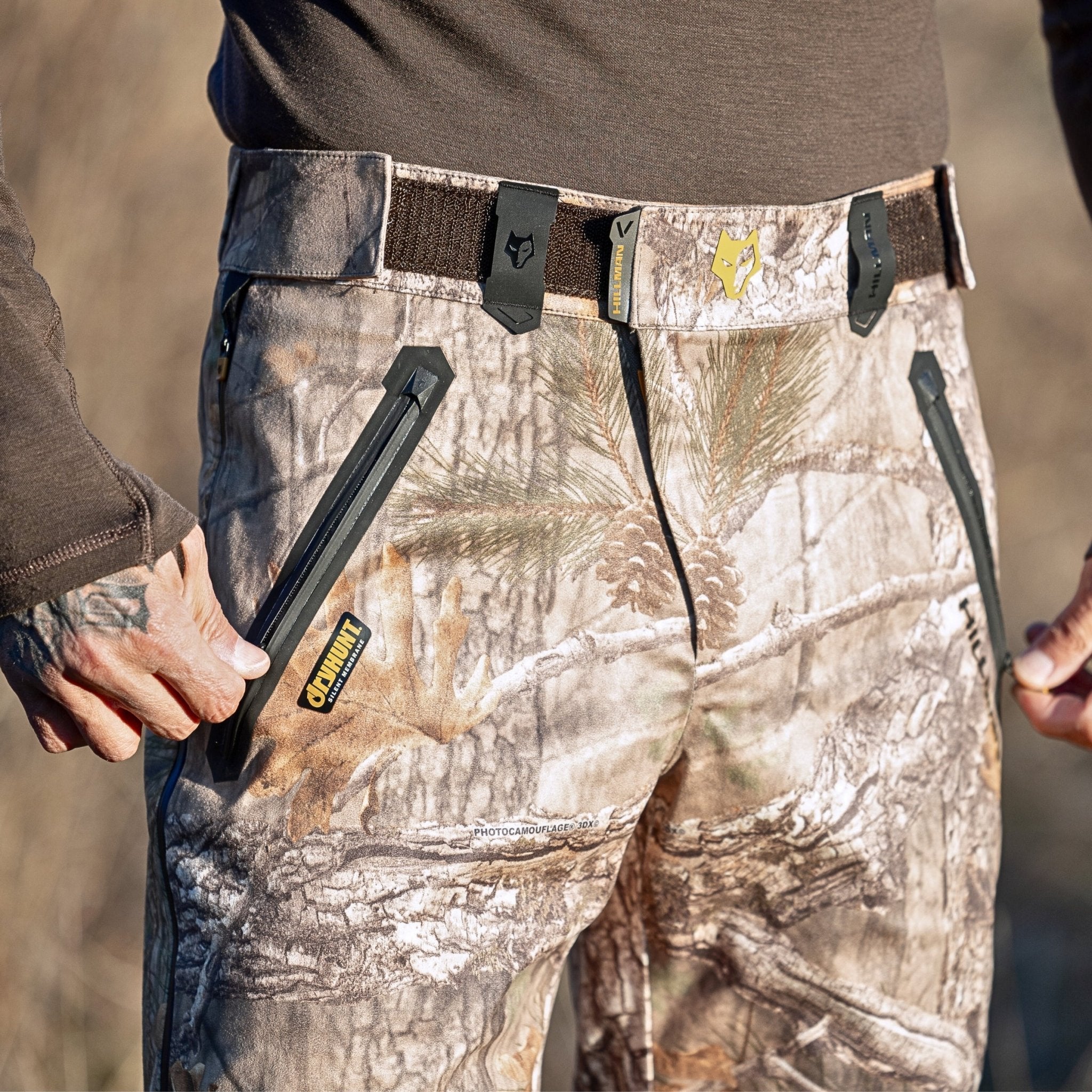
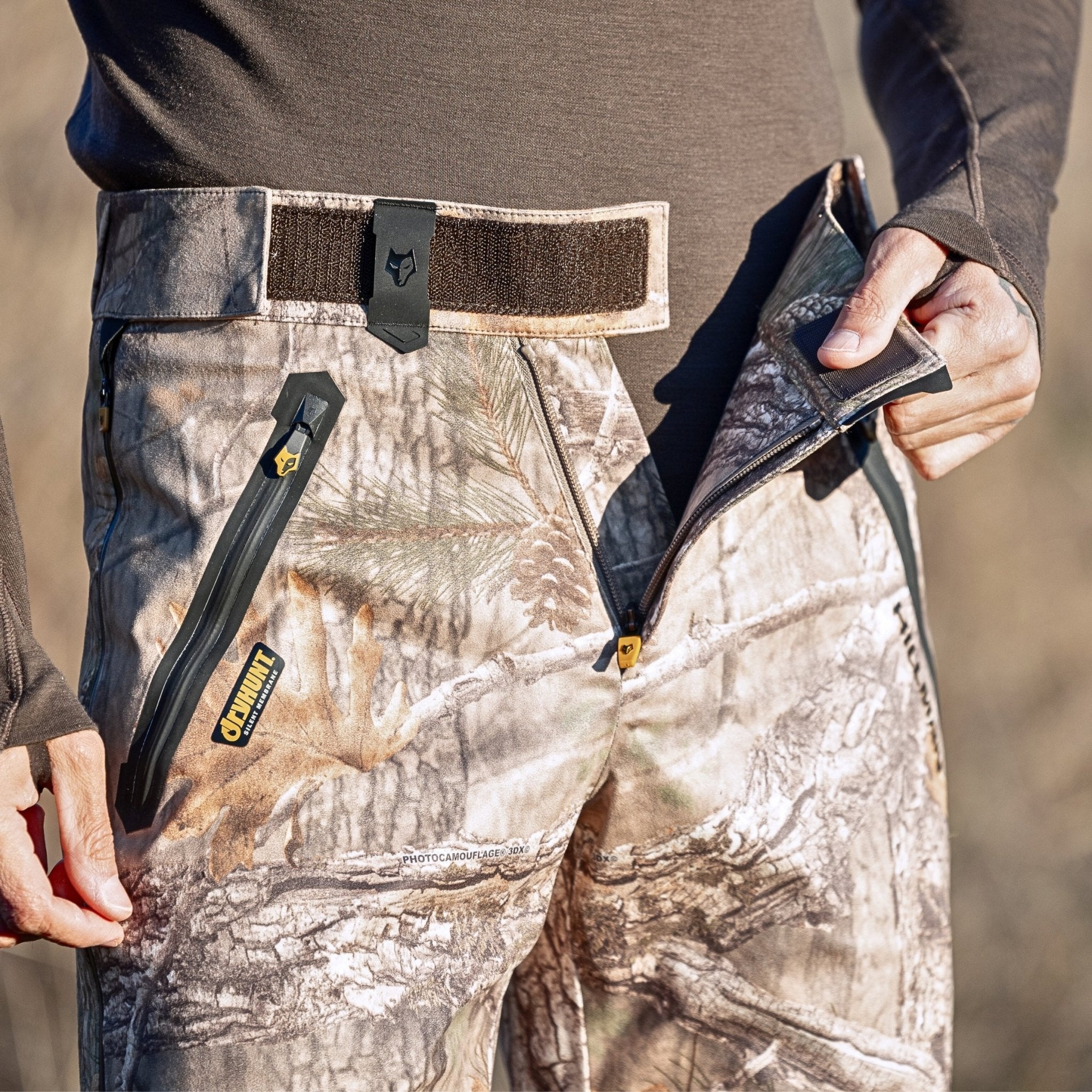
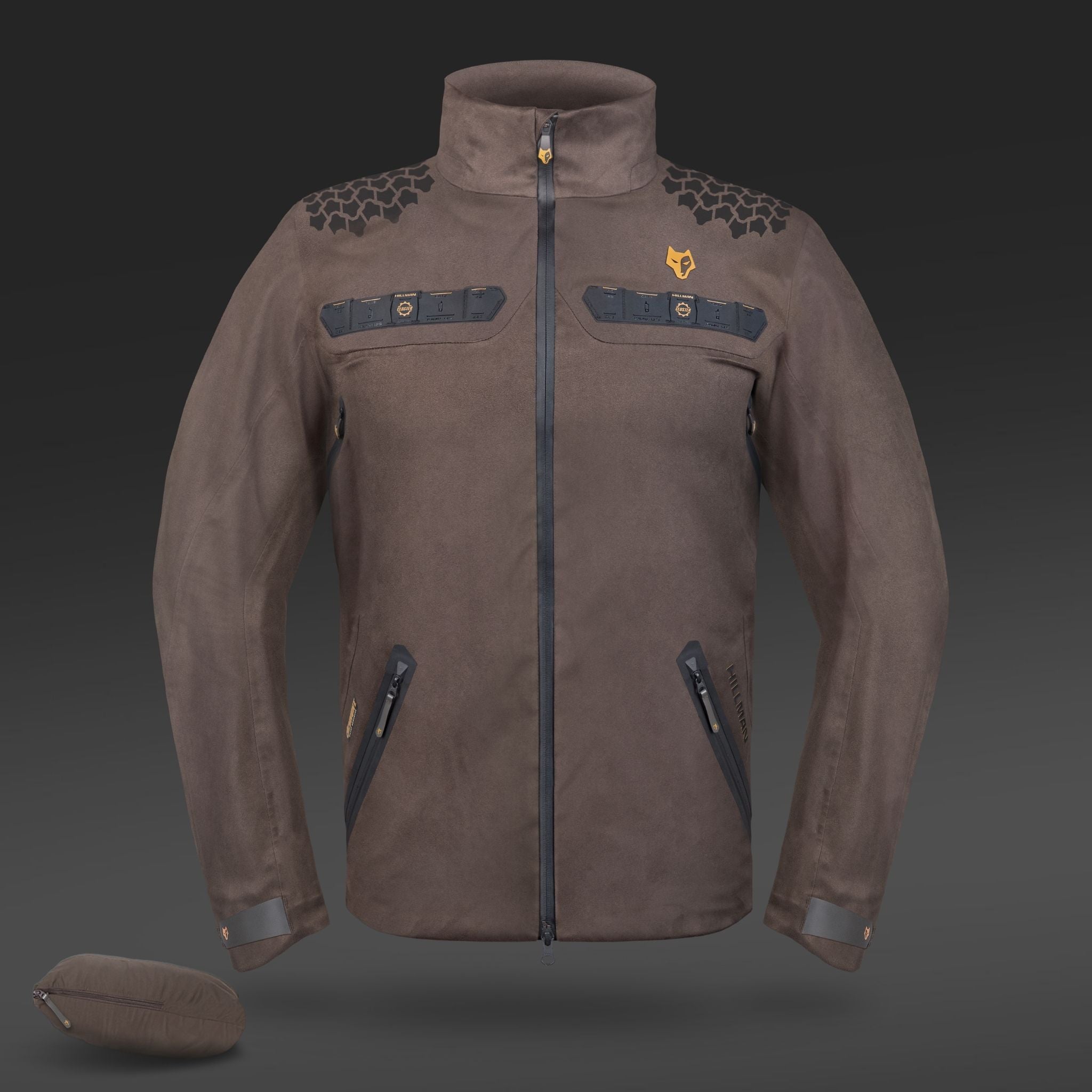
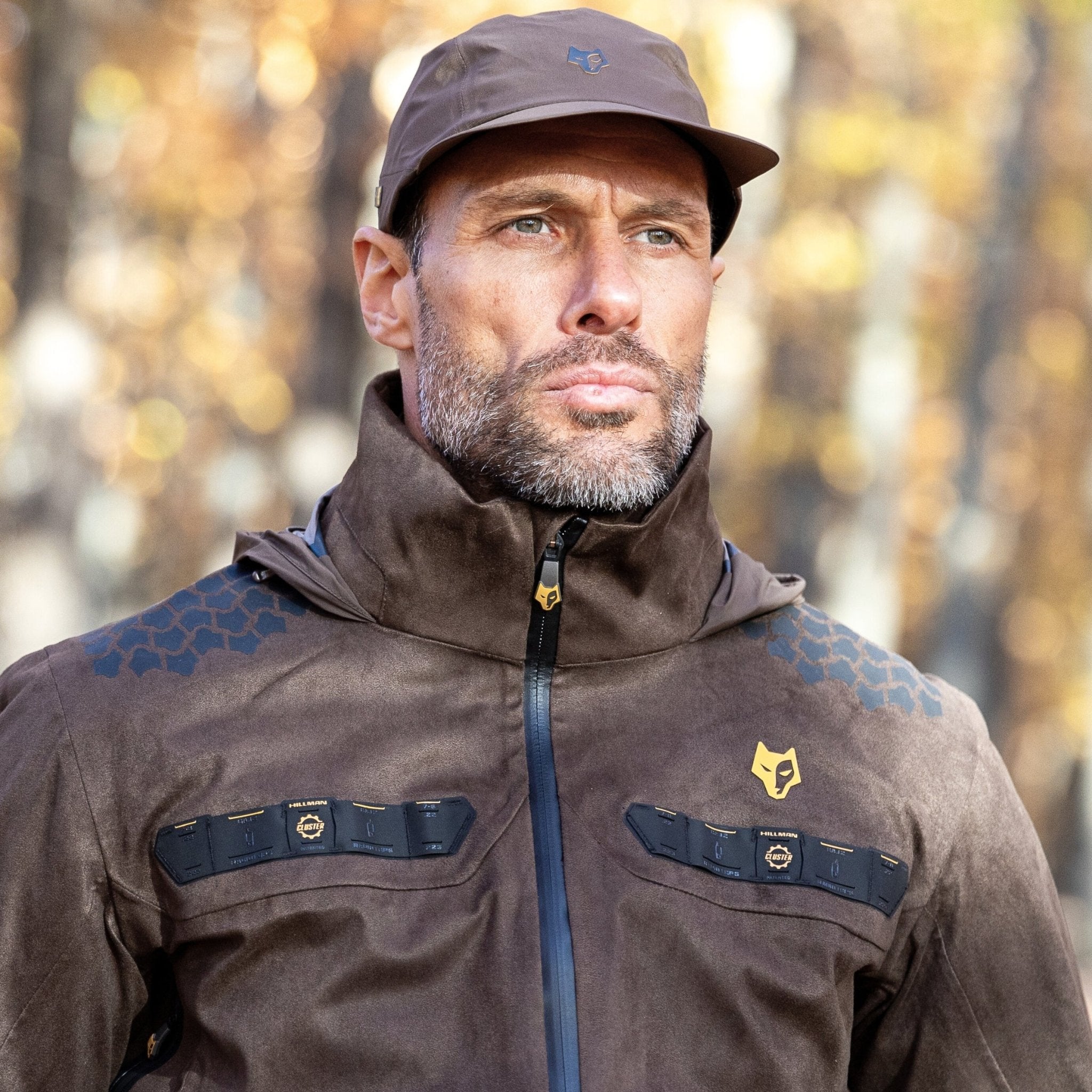
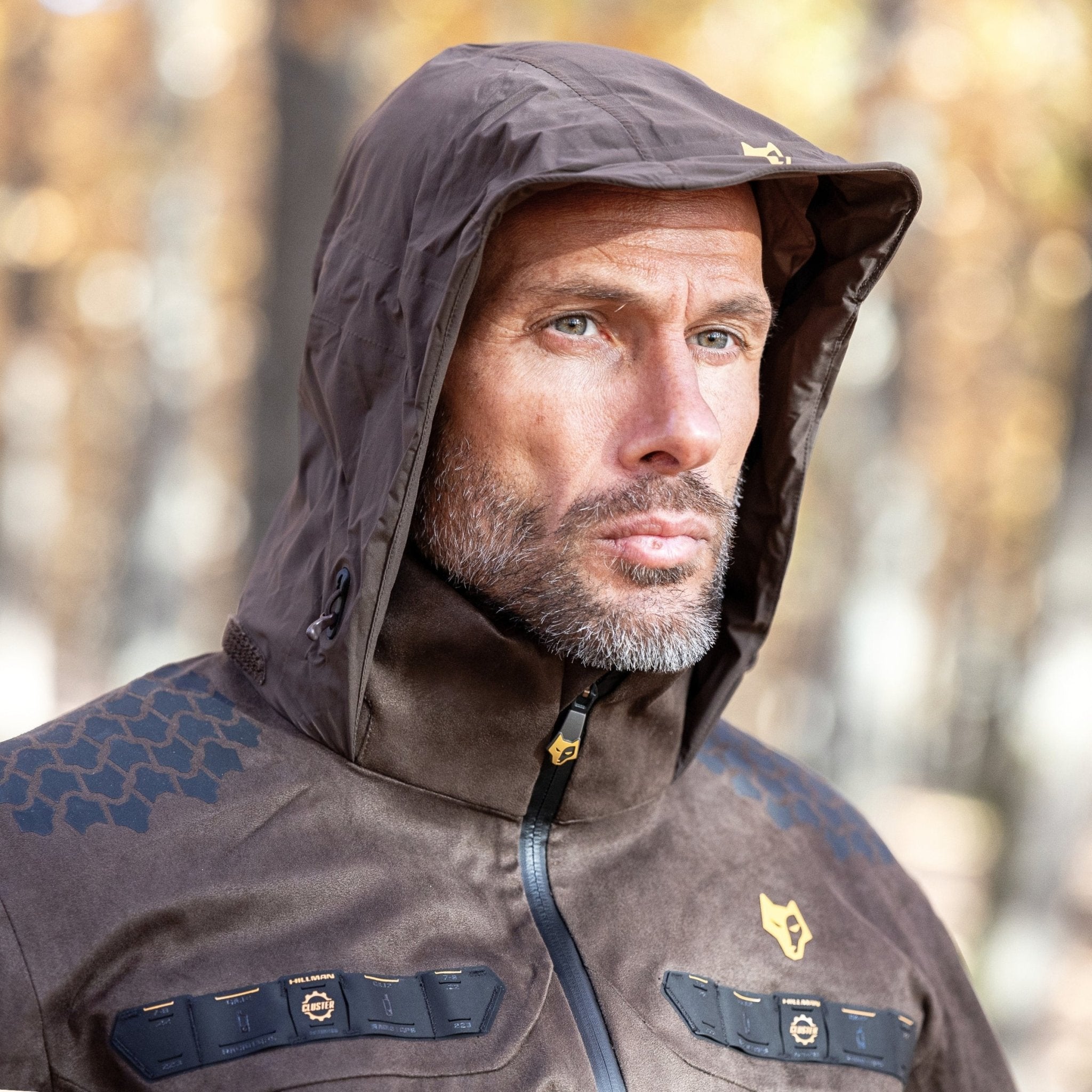
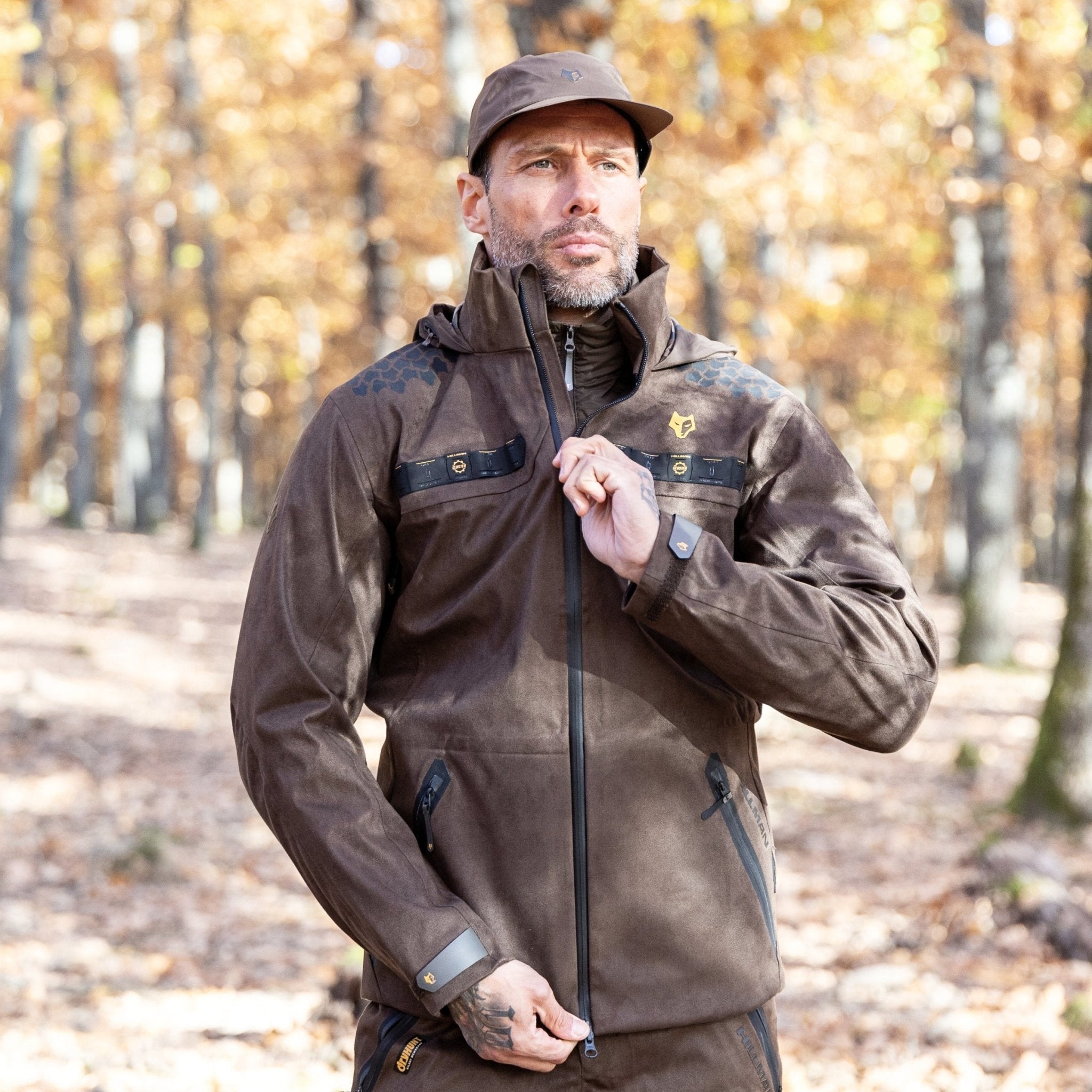
Share:
Best Hunting Rain Gear for Hunters (2025 guide)
Waterproof vs Insulated Boots: Which Is Better for UK Weather?